The Looming Council Web Portal
[2024]
The Looming Council is a community-based initiative by Möbius Design Studio that aims to:
• Facilitate access to historically significant resources relevant to Graphic Design education, practice and research in MENASA.
• Trace, document and analyze historical visual culture to unravel unknown or unrecognized intersections between the design discipline and concurring cultural, social, economic and/or political phenomena.
• Support the production of the design theoretical discourse of Graphic Design in MENASA around regional archives and accelerate networking and exchange between community members.
• Curate public programs (symposia, publications and exhibitions) that shed light on Graphic Design regional history.
• Construct a reliable and clear education resource for educators and students looking for regionally-relevant historical visual data.
—
Design:
Möbius Design Studio
Web Development:
Samuel Salminen
→ LINK TO WEBSITE

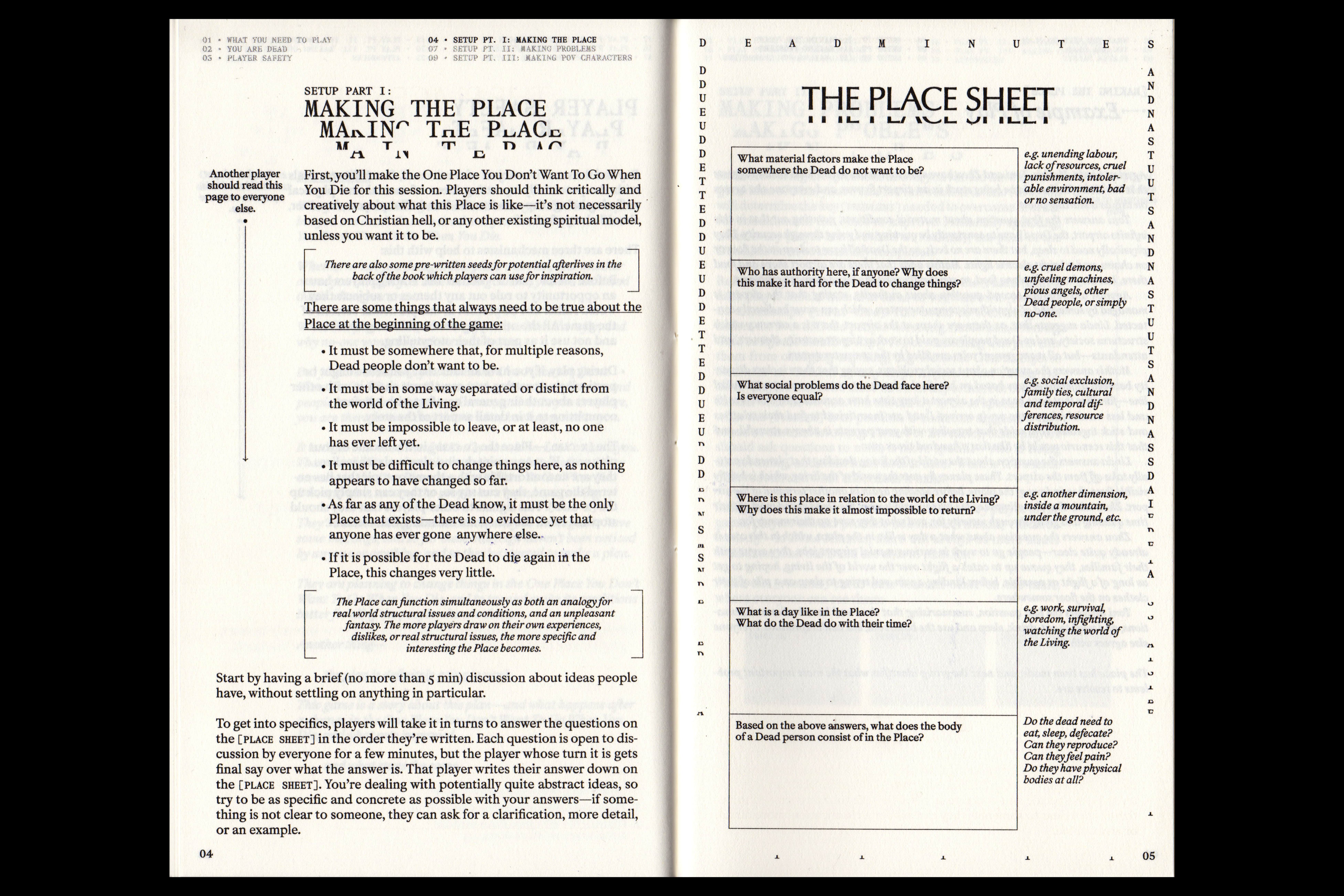
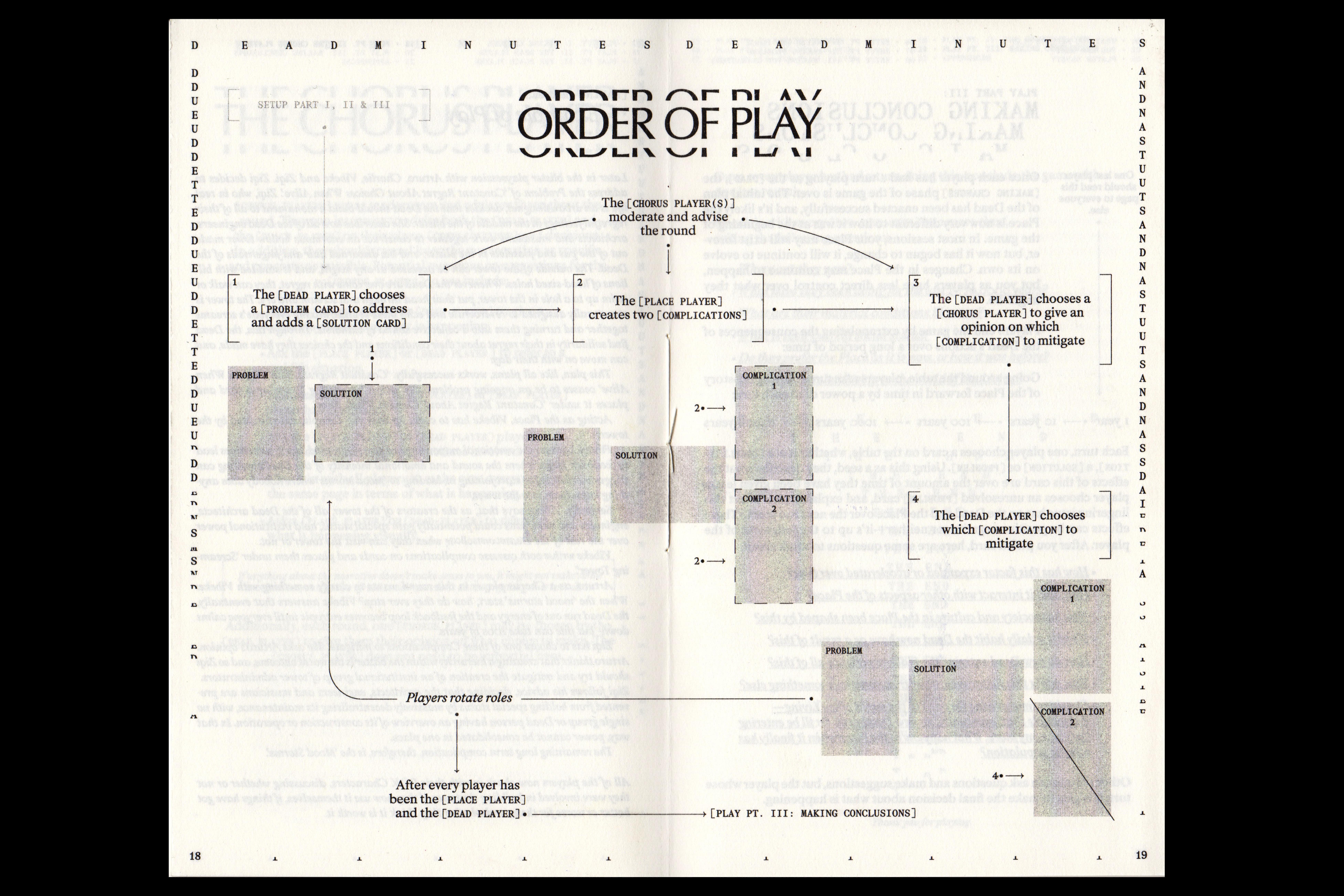
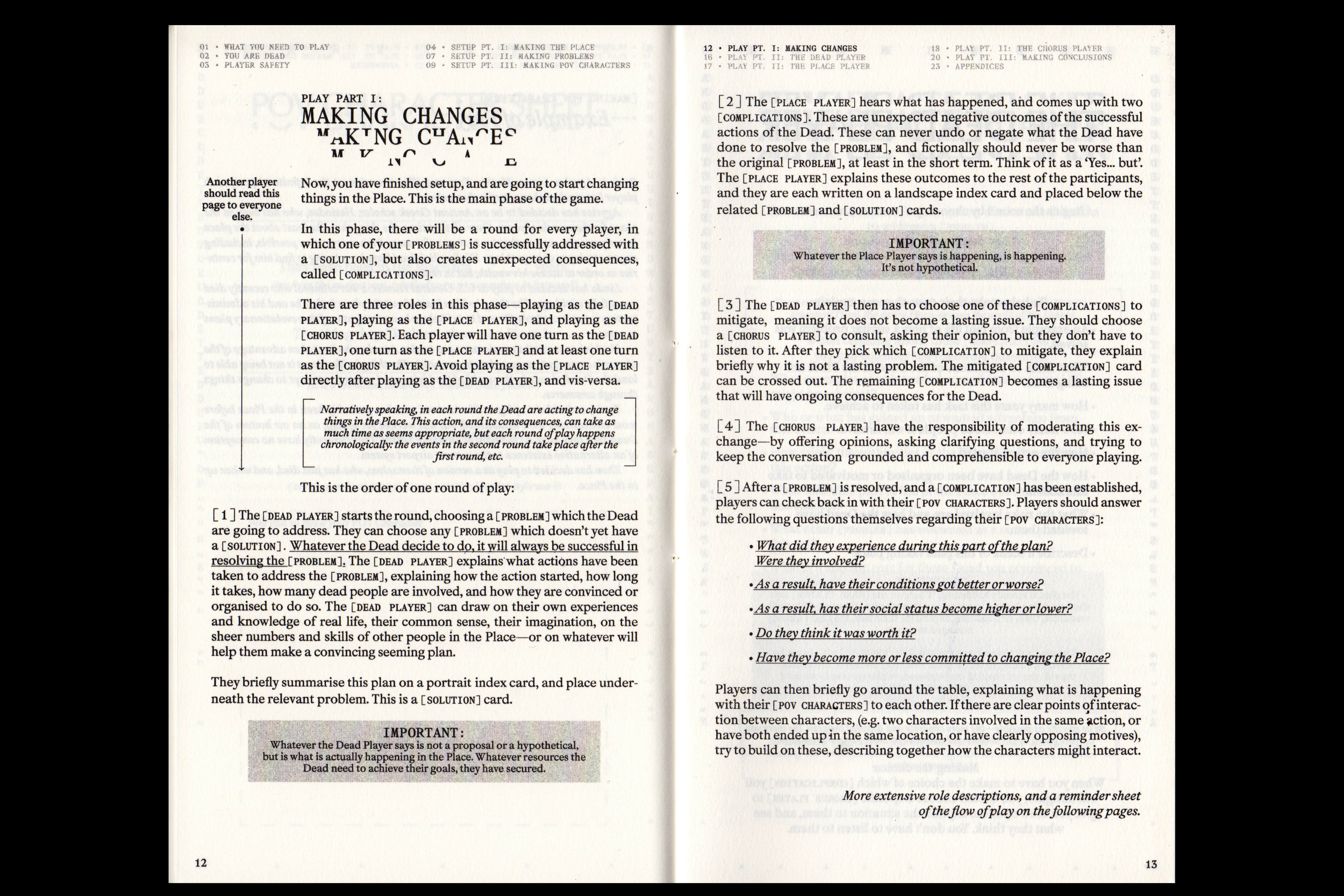

Dead Minutes
[2024]
A Story Game About Space, Time, Organisation and The Afterlife
By Tom K. Kemp
Commissioned by STRP Eindhoven
Editorial Design: Samuel Salminen
Printing & Binding: no kiss?
36 pages
1-colour RISO print
Paper: EOS 100g/m2 + EOS 120g/m2
Edition of 200
Typefaces:
Mercure by Charles Mazé / Abyme
Optima by Hermann Zapf
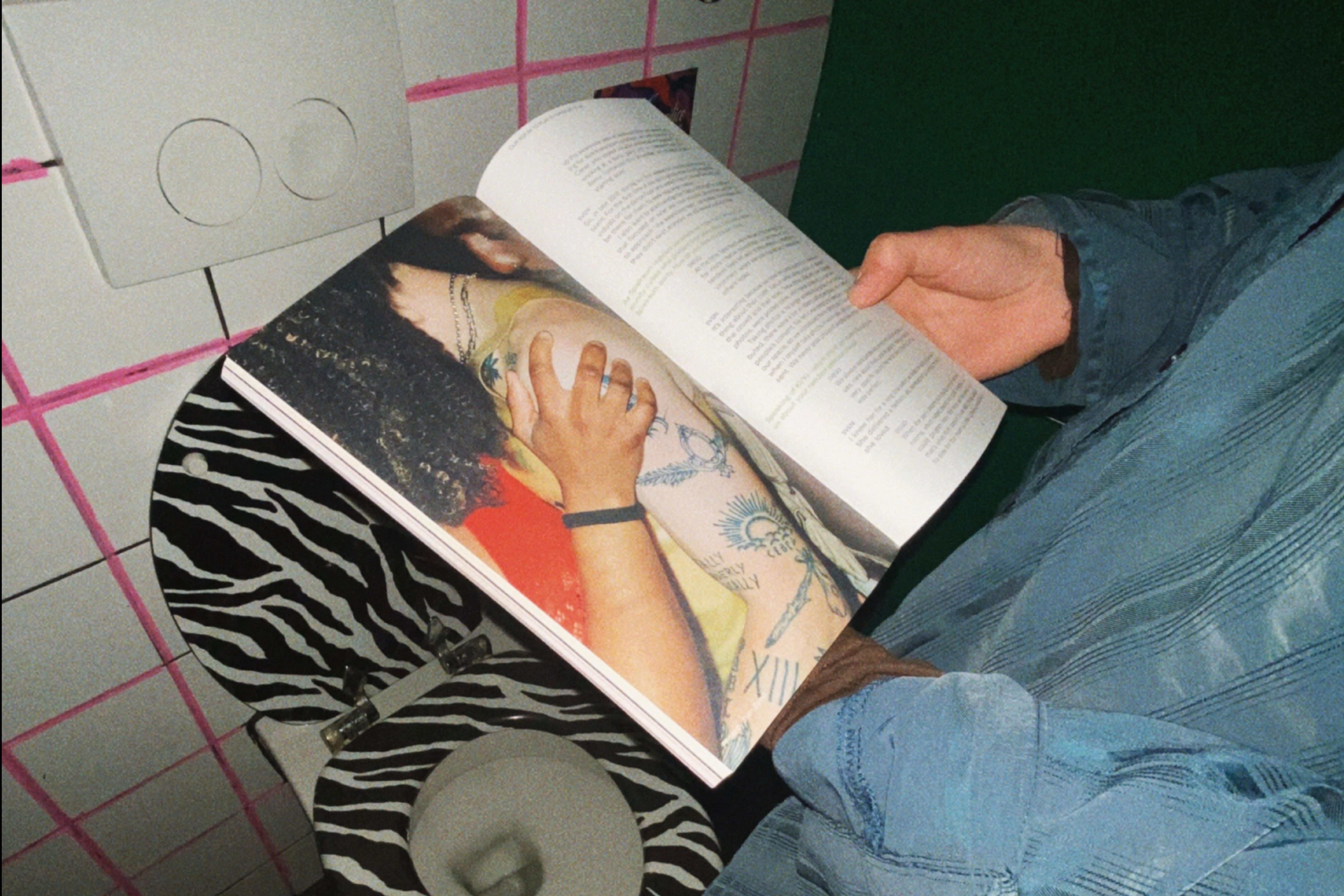
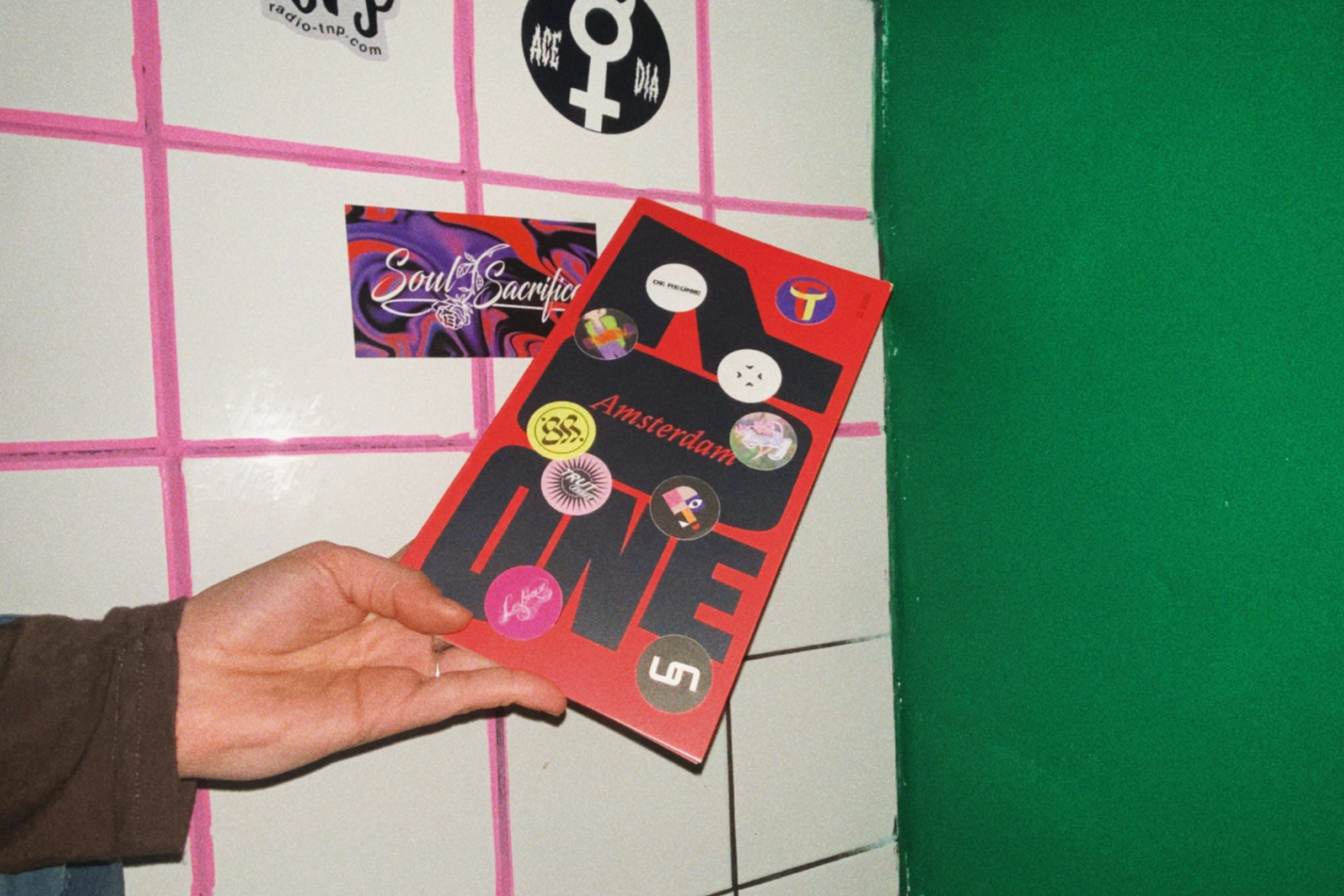
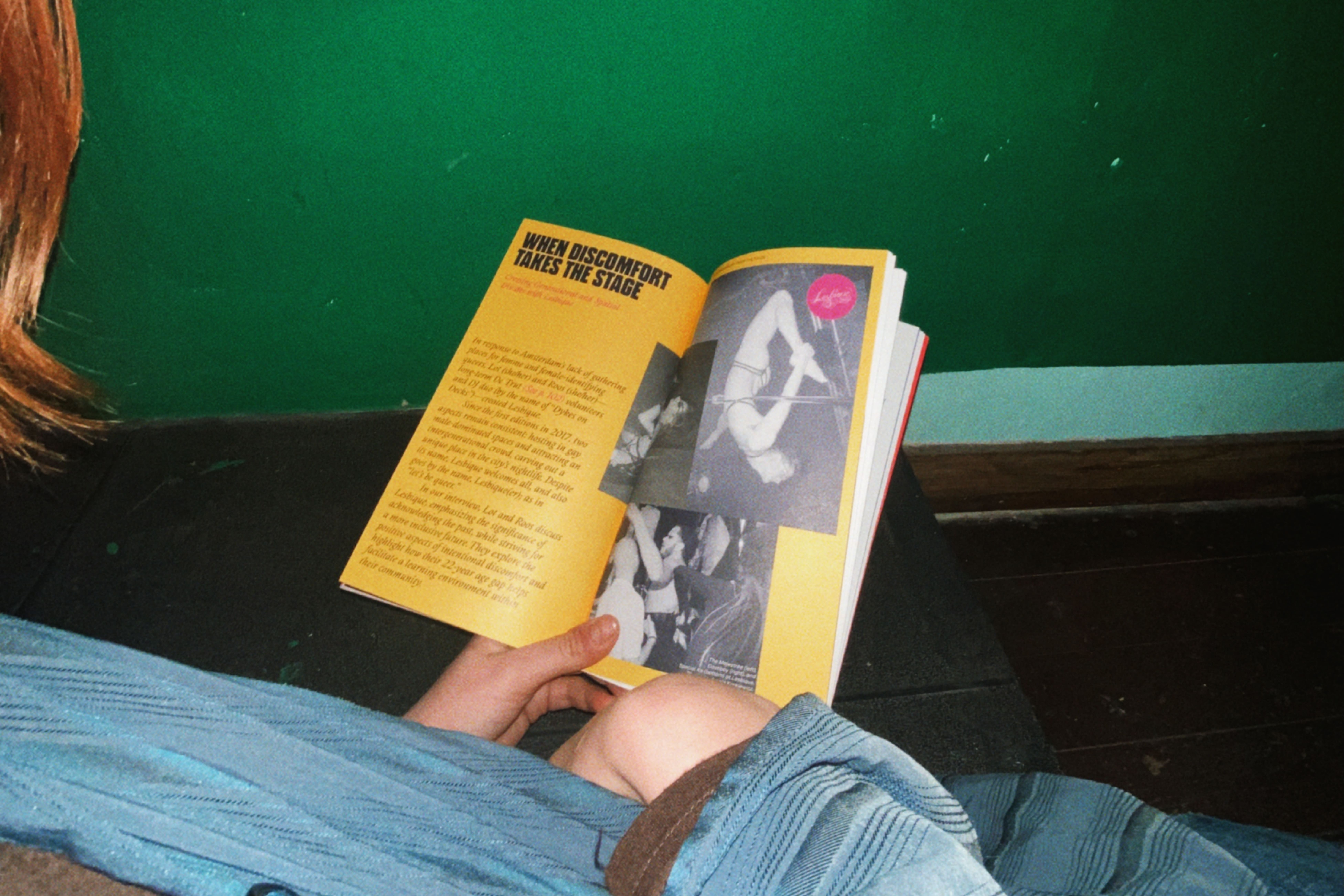
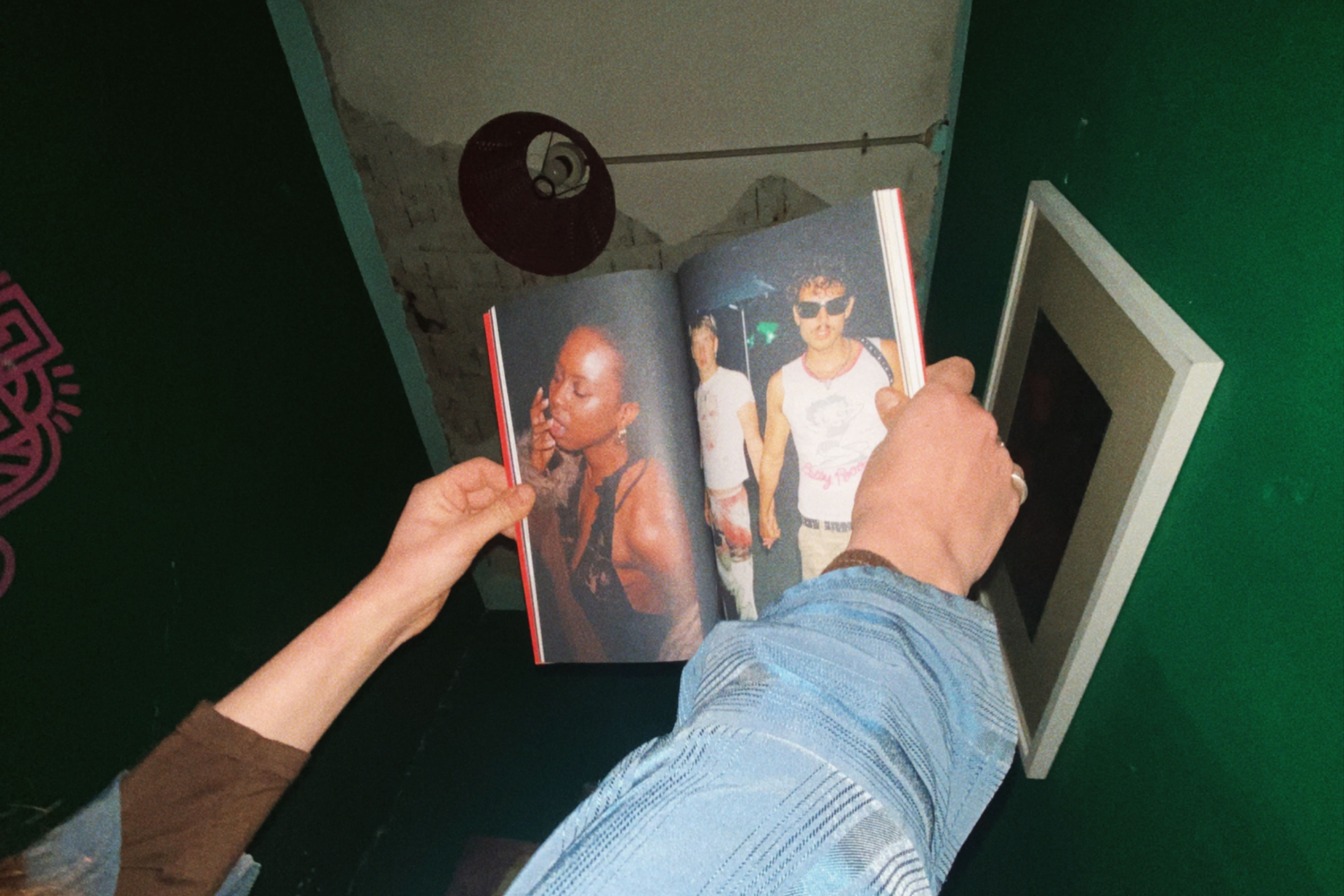
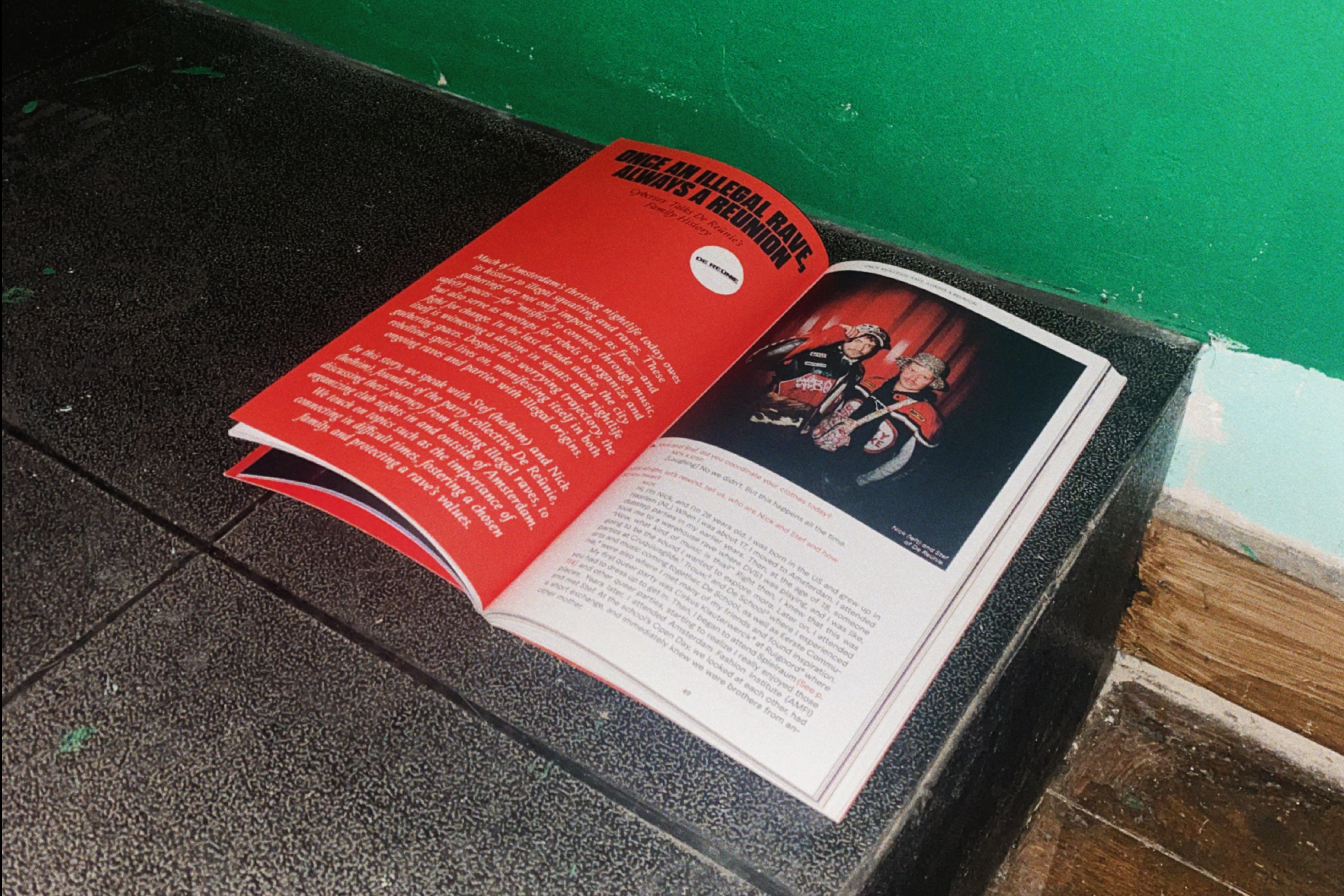
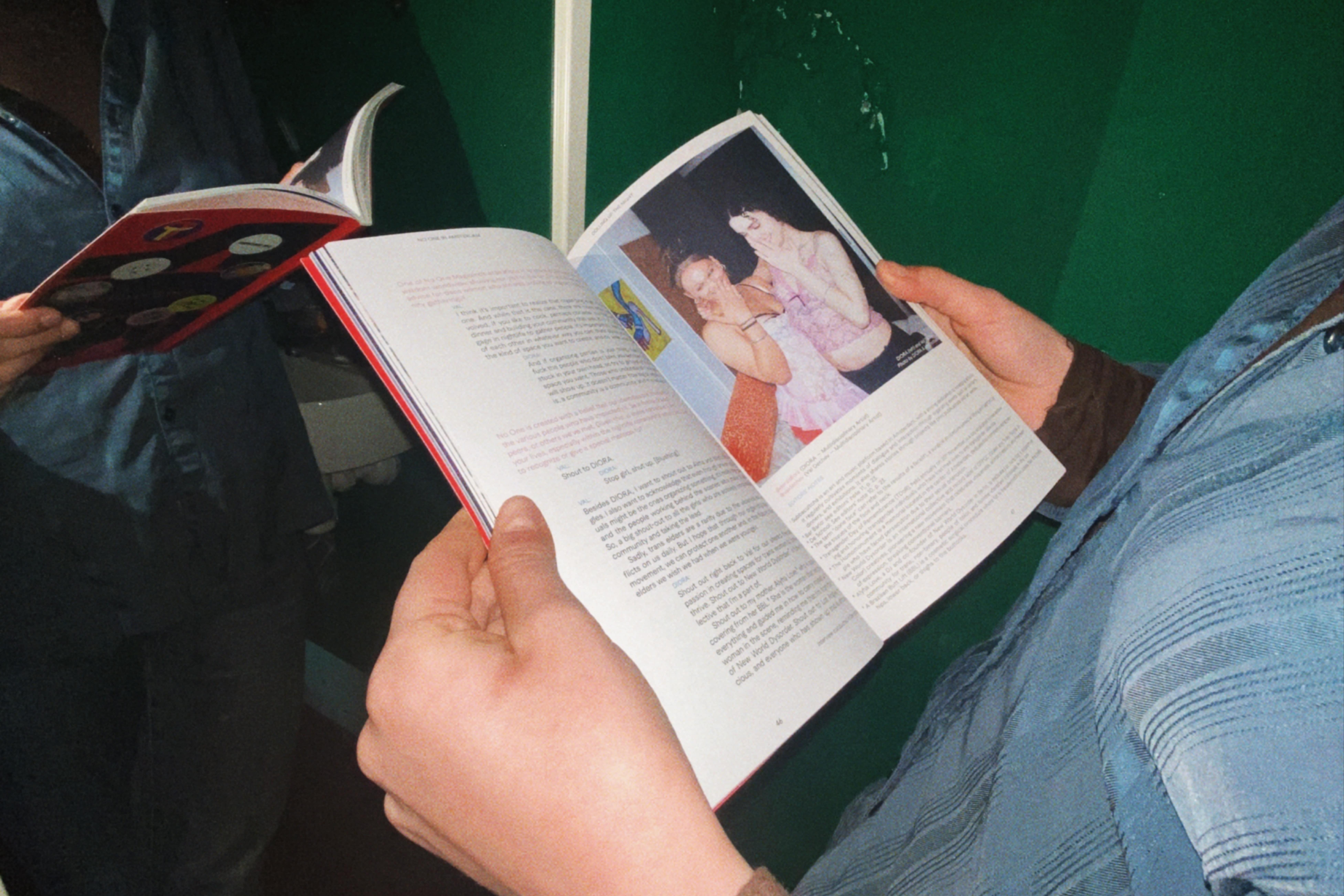
NO ONE Magazine — Issue 01: Amsterdam
[2024]
Print publication about underground queer nightlife around the world
Writers & Editors-in-Chief:
Viet & Jeremy Raider-Hoang
Content & Creative Direction:
Viet & Jeremy Raider-Hoang
Editorial Design:
Samuel Salminen
Printing & Binding:
Printing House KOPA
128 pages
Edition of 1000
Typefaces:
Macan by Tightype
Adelphe by Eugénie Bidaut
Queering by Adam Naccarato
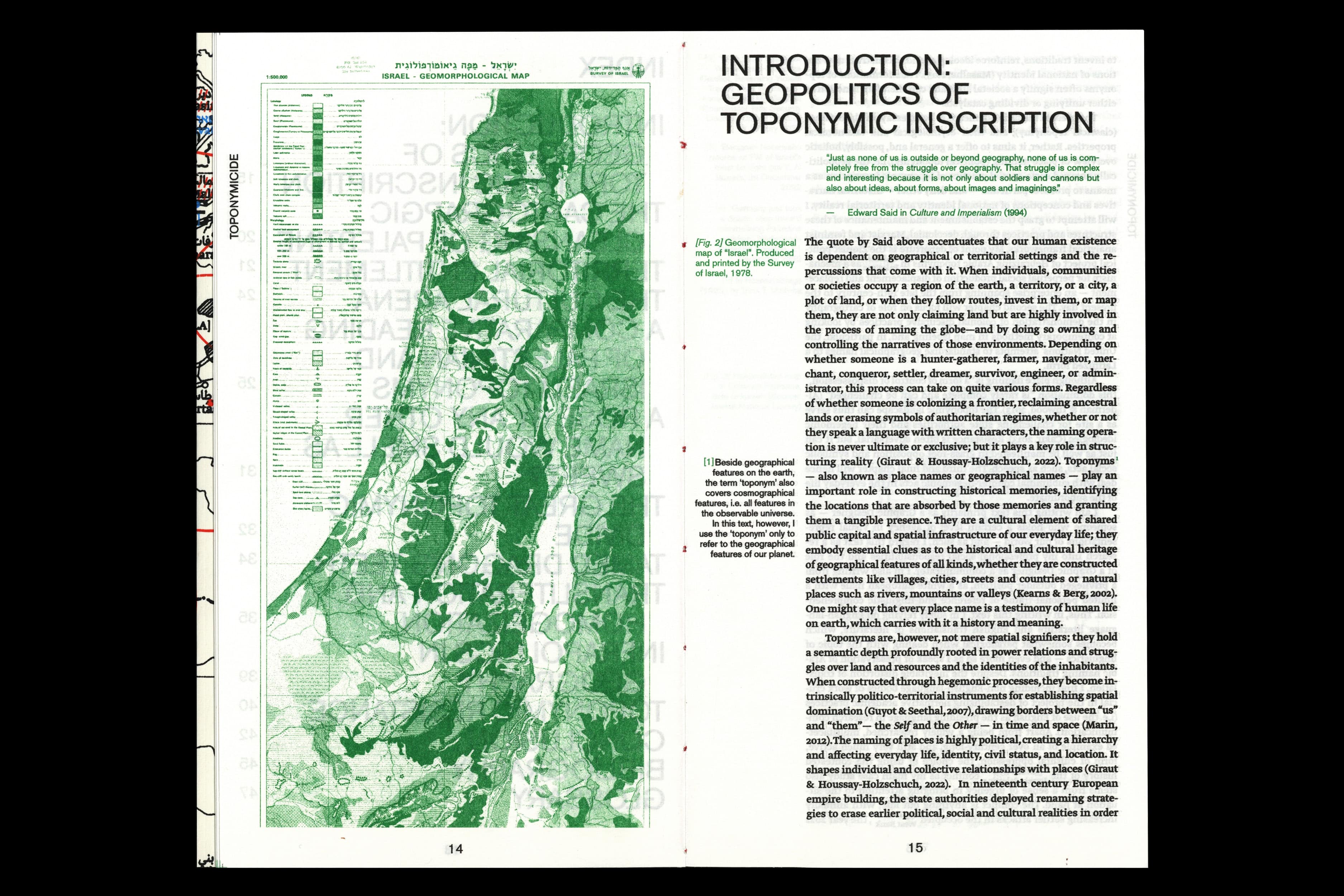
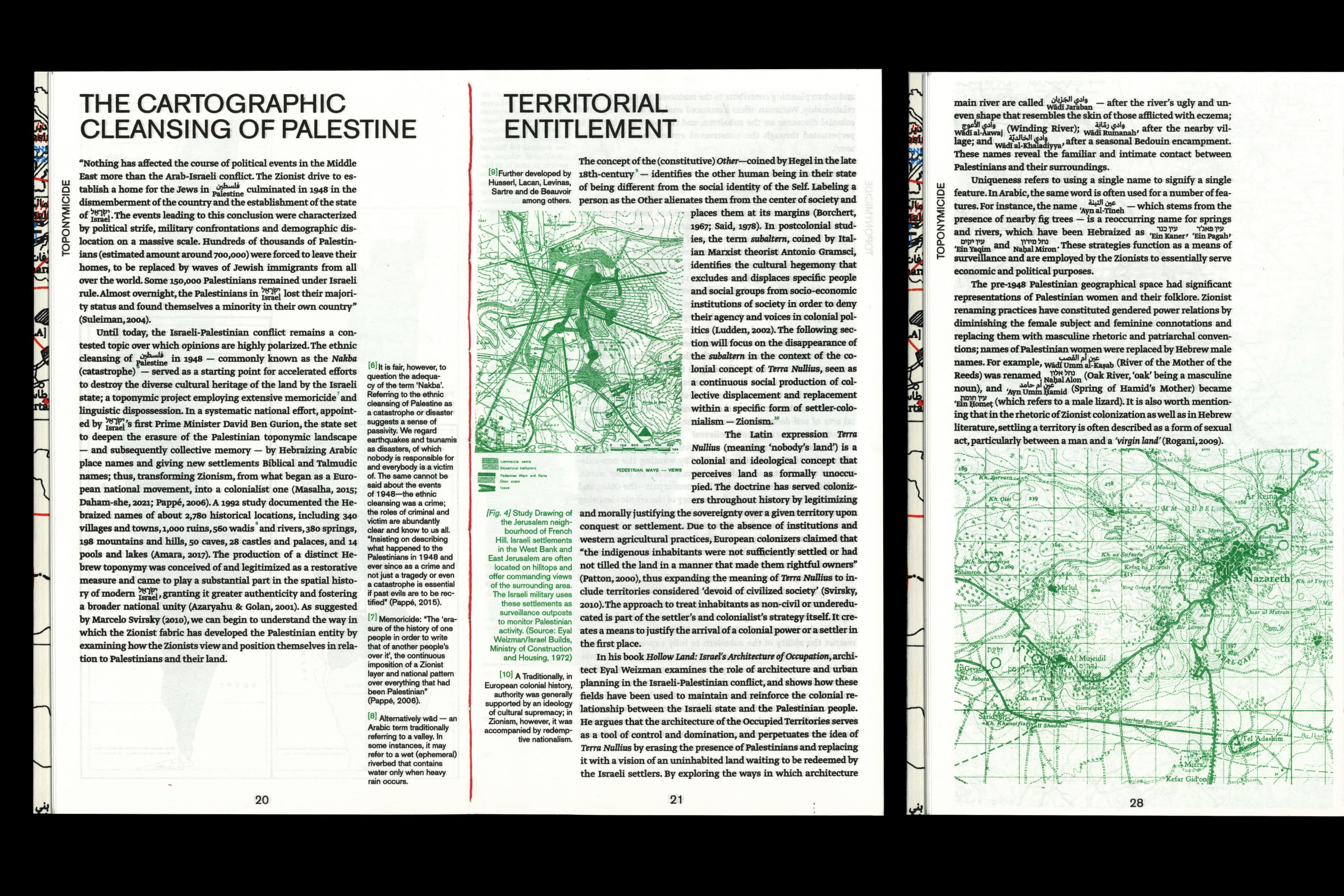

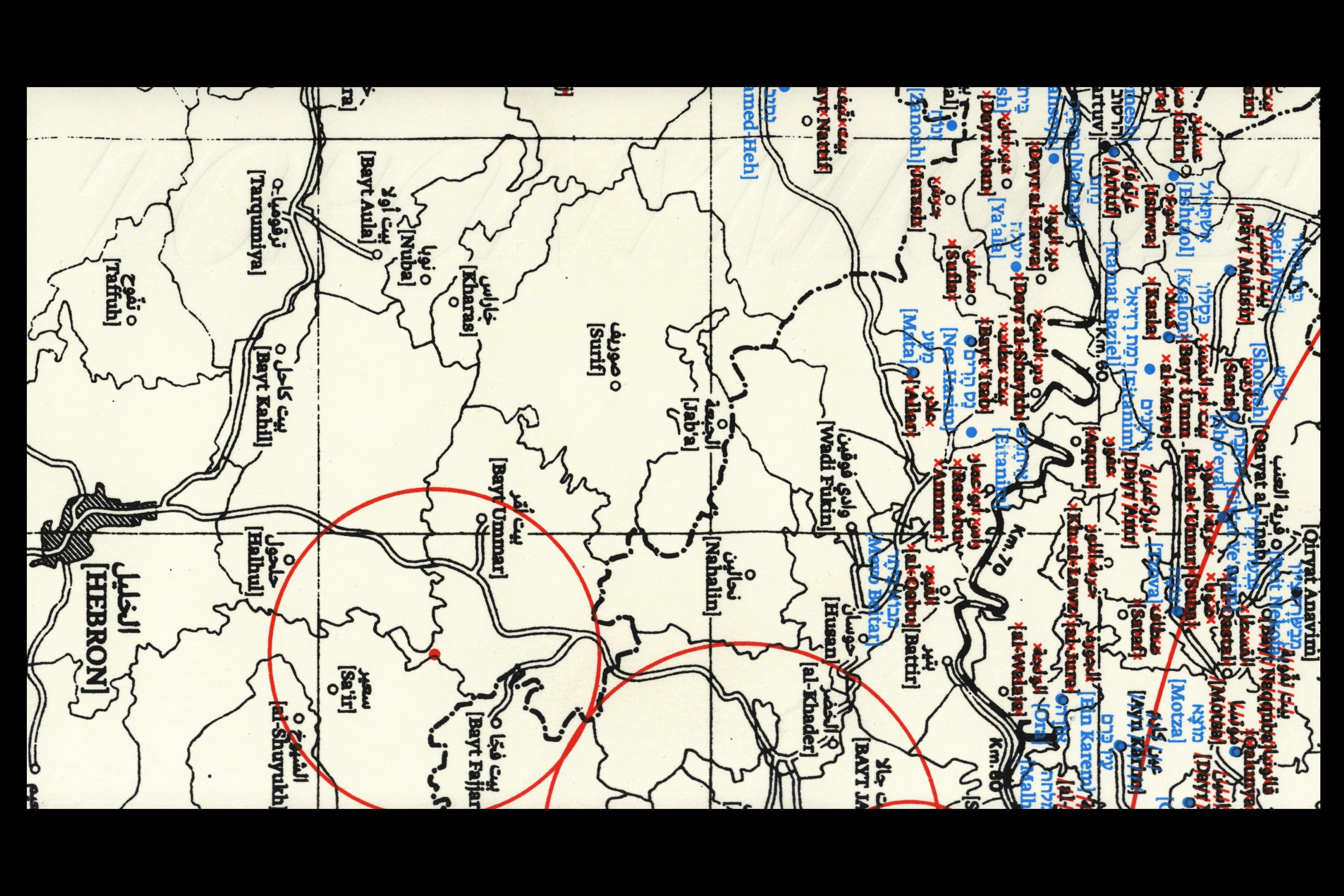
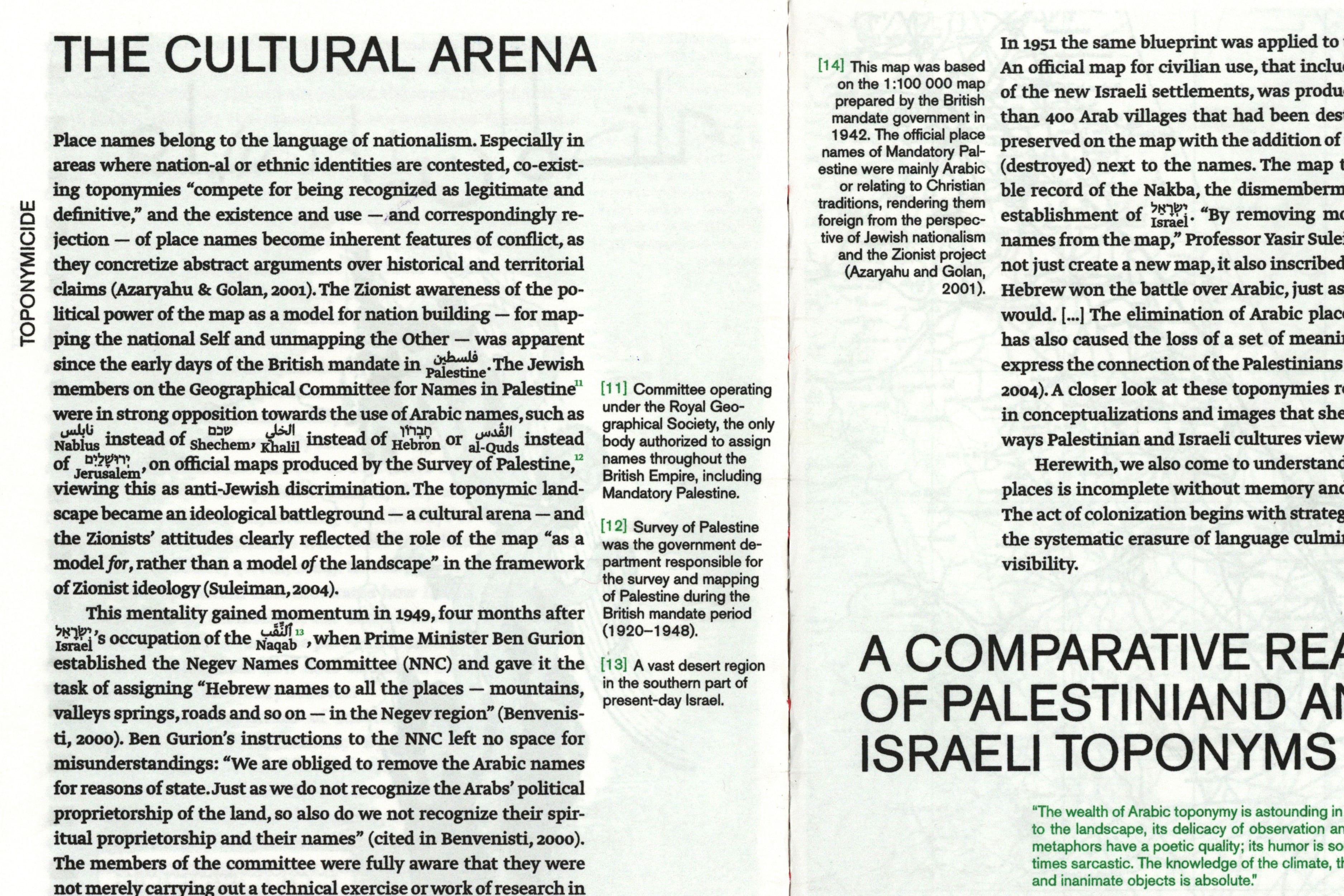
TOPONYMICIDE
[2023]
Bachelor's Thesis — Graphic Design
Royal Academy of Art The Hague
The names of geographical locations, also known as toponyms, play a crucial role in shaping the identities of individuals and communities and constructing historical memories. The process of naming is not only about claiming land,
but also about owning and controlling narratives of the environment. The naming of places holds political significance and is often used as a means to establish spatial domination, drawing borders between groups and shaping the
relationship between individuals and their surroundings. Place naming can thus serve as a tool for constructing new notions of national identity and promoting certain historical narratives while denying, surpressing or erasing
others.
Through decolonial analysis, this study will attempt to provide an overview of the geopolitically charged practice of toponymic inscription, with the main point of departure being the Zionist political project of
Hebraizing Arabic toponyms in Palestine. The focus will then shift to the role and power of cartography and the Latin script in colonial discursive practices, and finally to a closer look at subliminal counterhegemonic acts of
resistance in the everyday lives of the subordinate.
Supervised by Prof. Füsun Türetken
→ READ ONLINE
48 pages
2-colour RISO print
Cover: 3-colour screen print
Paper: EOS 90g/m2
Edition of 32
Typefaces:
Greta Text by Typotheque
Akzidenz Grotesk by Berthold Types

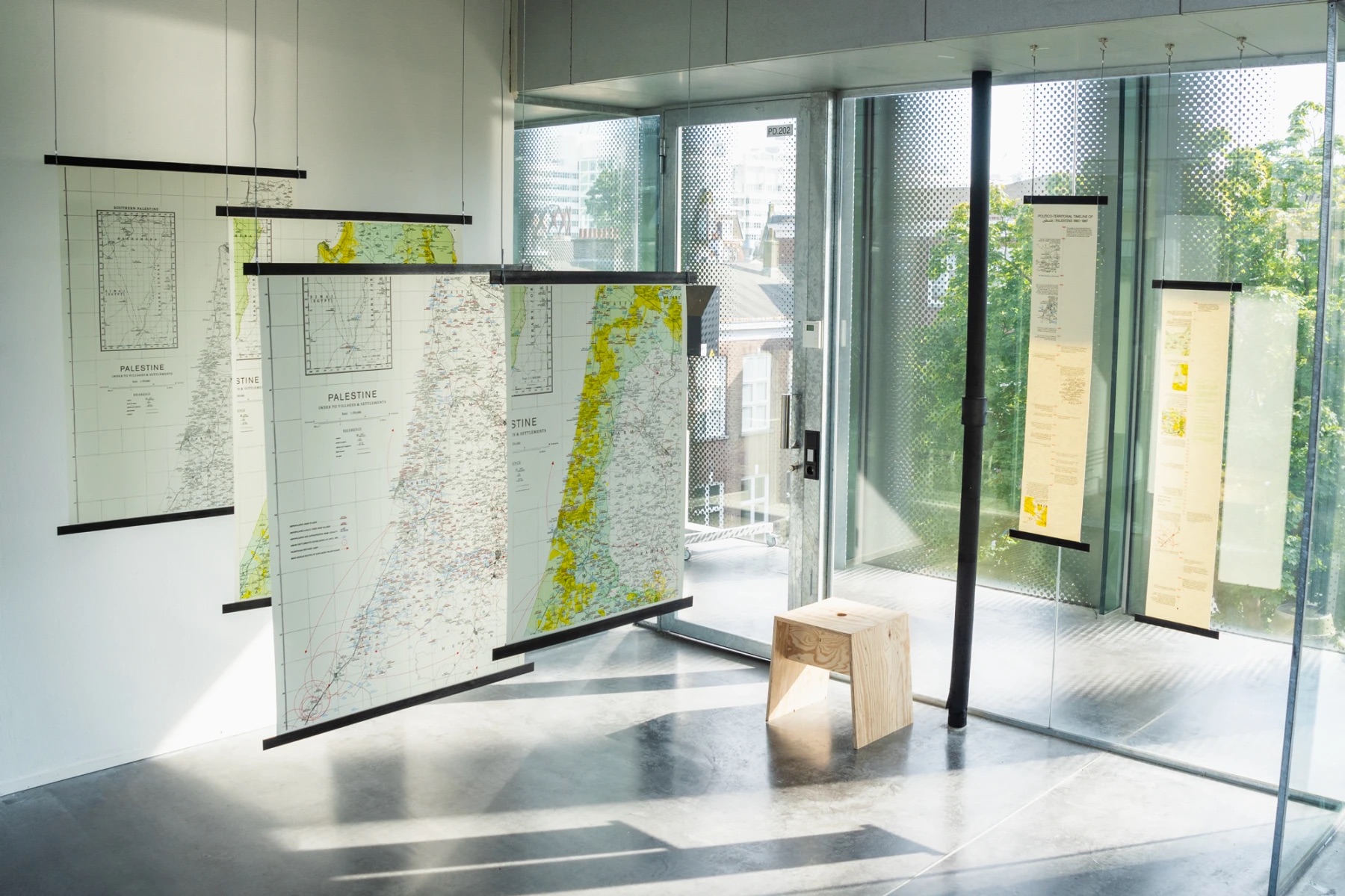

Non-Papers of Constructed Absence
[2023]
Graduation Project — Graphic Design
Royal Academy of Art, The Hague
Cartography is intrinsically a form of political discourse — whether intentional or unintentional, maps produce and, above all, suppress knowledge and perpetuate systems of power and oppression. Non-papers of Constructed Absence
investigates the ways in which maps and other forms of spatial representation — reinforced by the languages and writing-systems they employ to create meaning — are used as instruments for shaping socio-political narratives while
erasing indigenous voices, spaces, and histories.
Drawing upon comparative analysis of maps created between 1946 and 1951—before and after the Nakba and the establishment of the State of Israel — Samuel utilises layered spatial data, overprinting, and multi-script typesetting to
intervene with ‘official’ documents and shed light on the silencing and desired non-existence of Palestinians that lies at the heart of Zionist cartographic narratives; investigating what has been erased, added, and class="lazy" altered in
order to deconstruct the politico-territorial narratives the maps reproduce. By drawing attention to these power dynamics, the work challenges the idea that cartography can ever be truly objective, and strives to imagine new ways
of representing space that are more rooted in plurality, historical transparency, and social justice.
Tutors:
Ruben Pater & Silvio Lorusso
Transliteration consultant:
Diya Ghantus
Typeface:
Greta Text by Typotheque
→ GRADUATION CATALOGUE
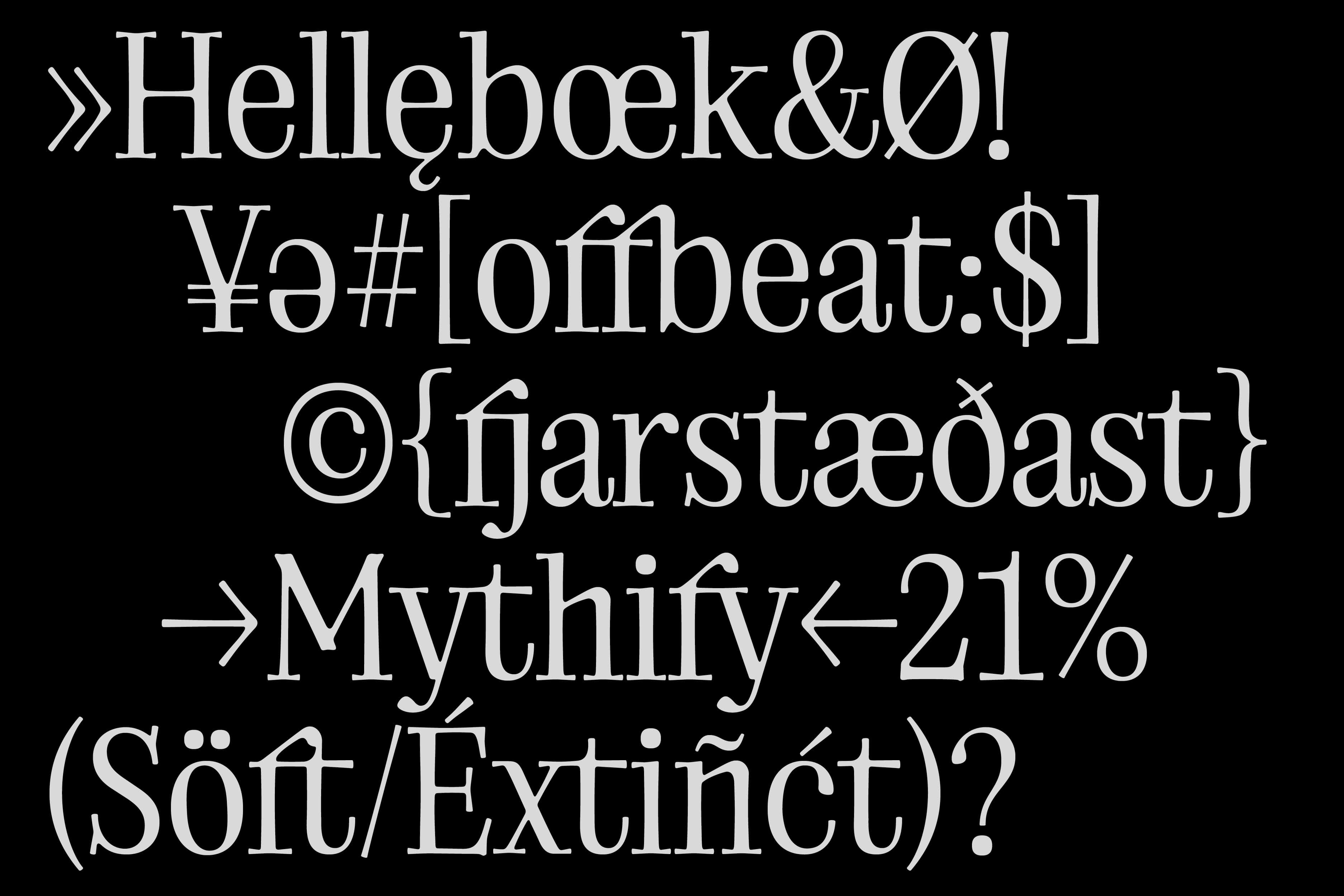
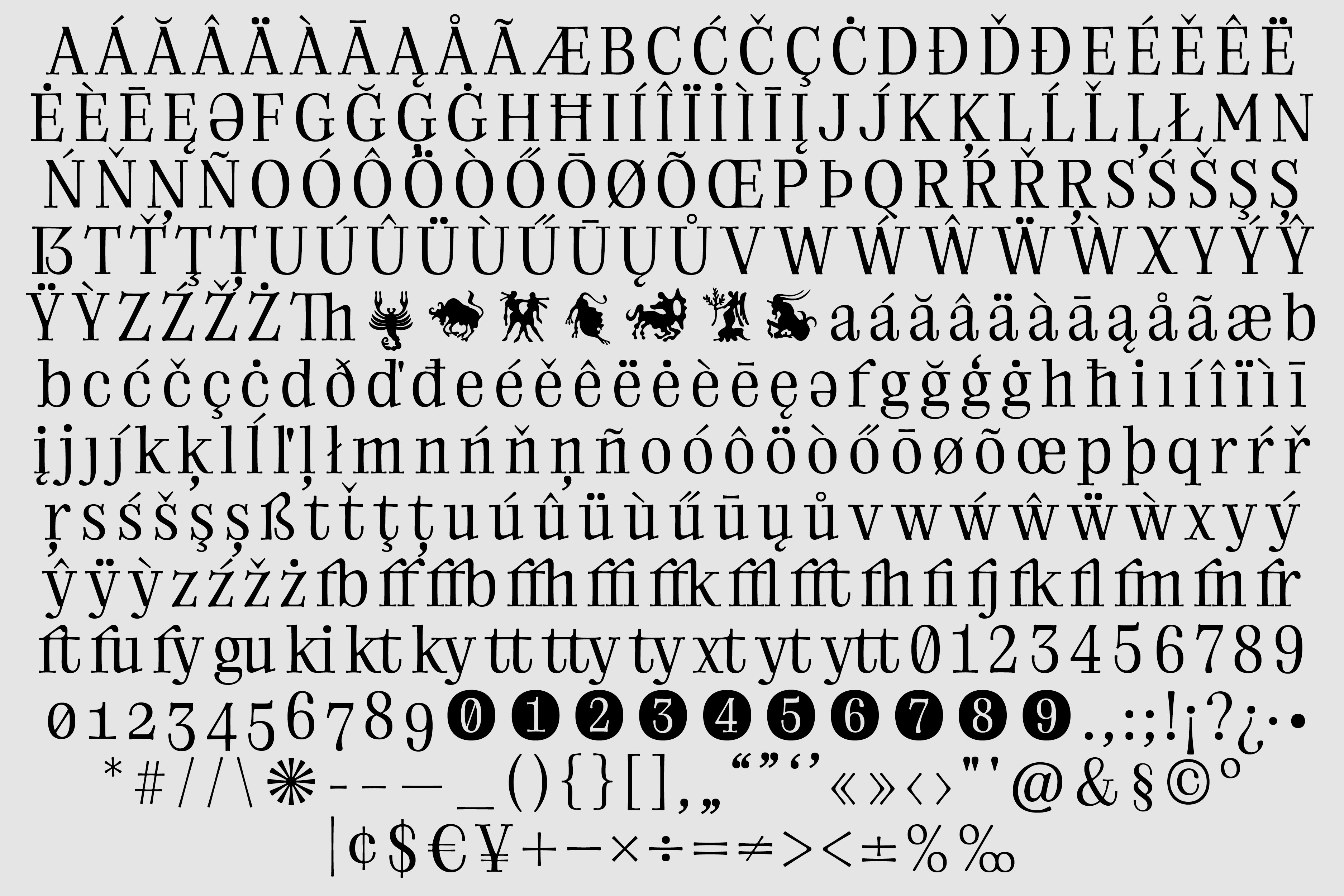
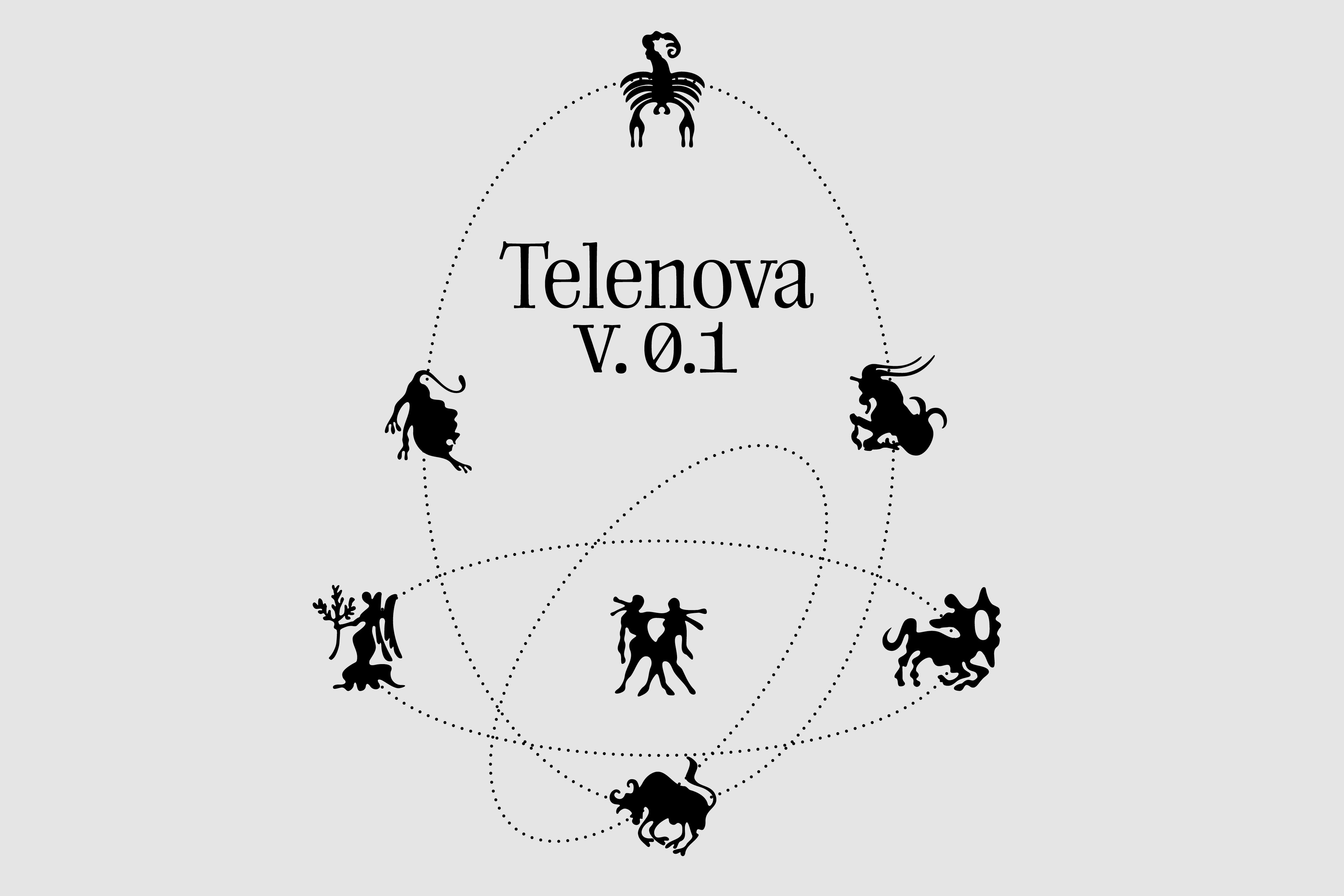
Telenova
[2021]
Designed in collaboration with Basia Strzeżek
Telenova is free to use for student and educational projects, charities, non-profits.
For commercial use, please get in touch.
→ Download for free

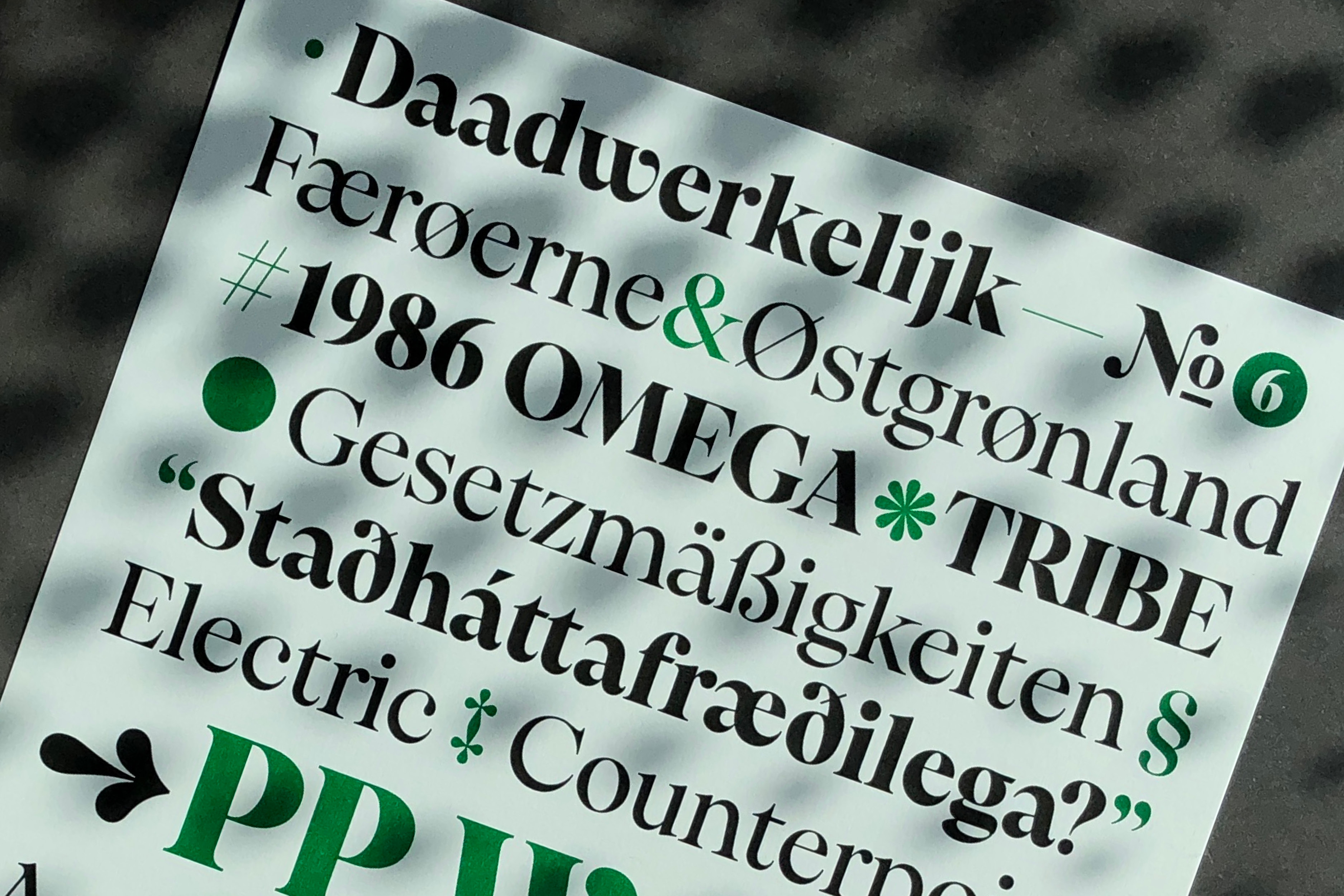

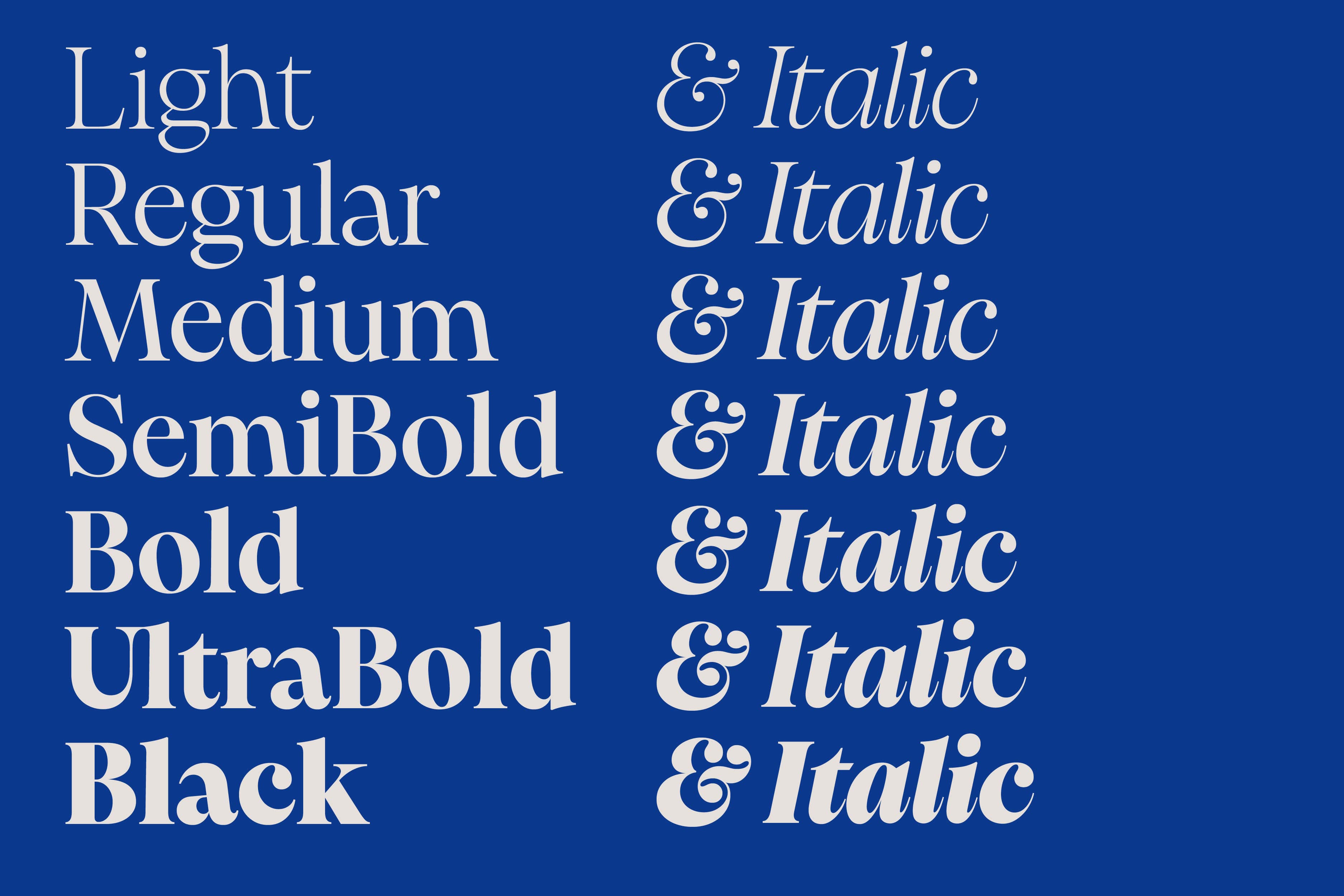
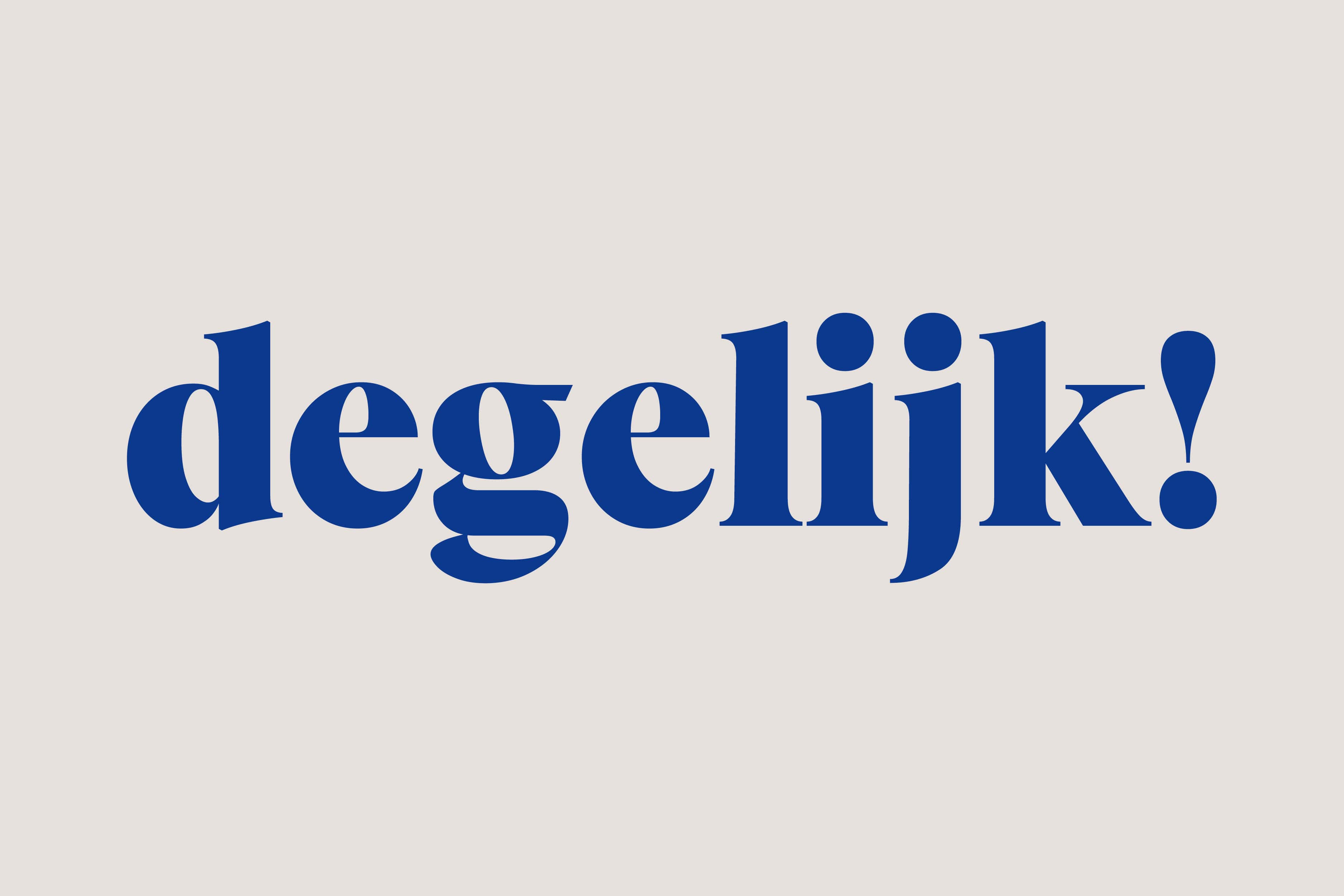
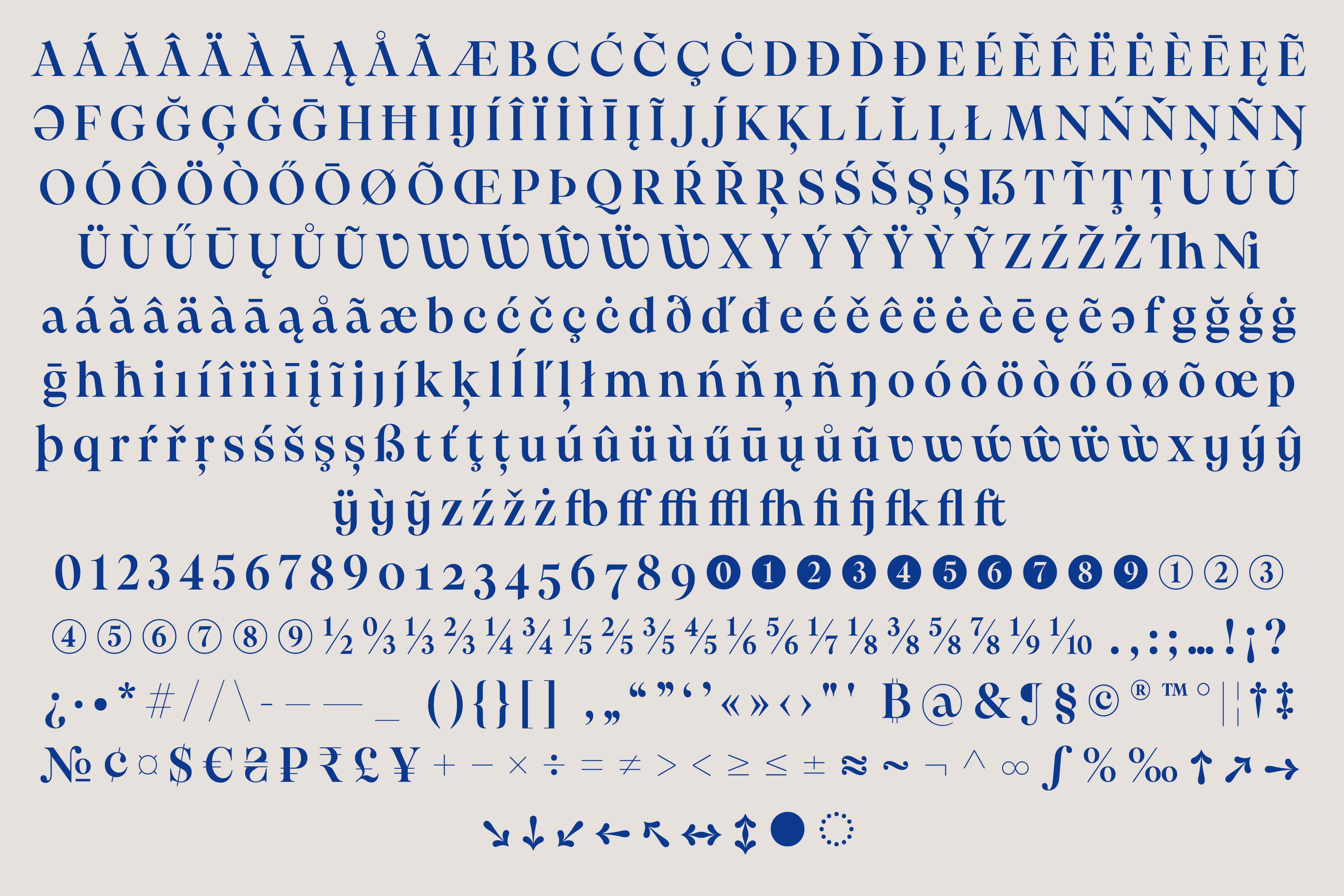
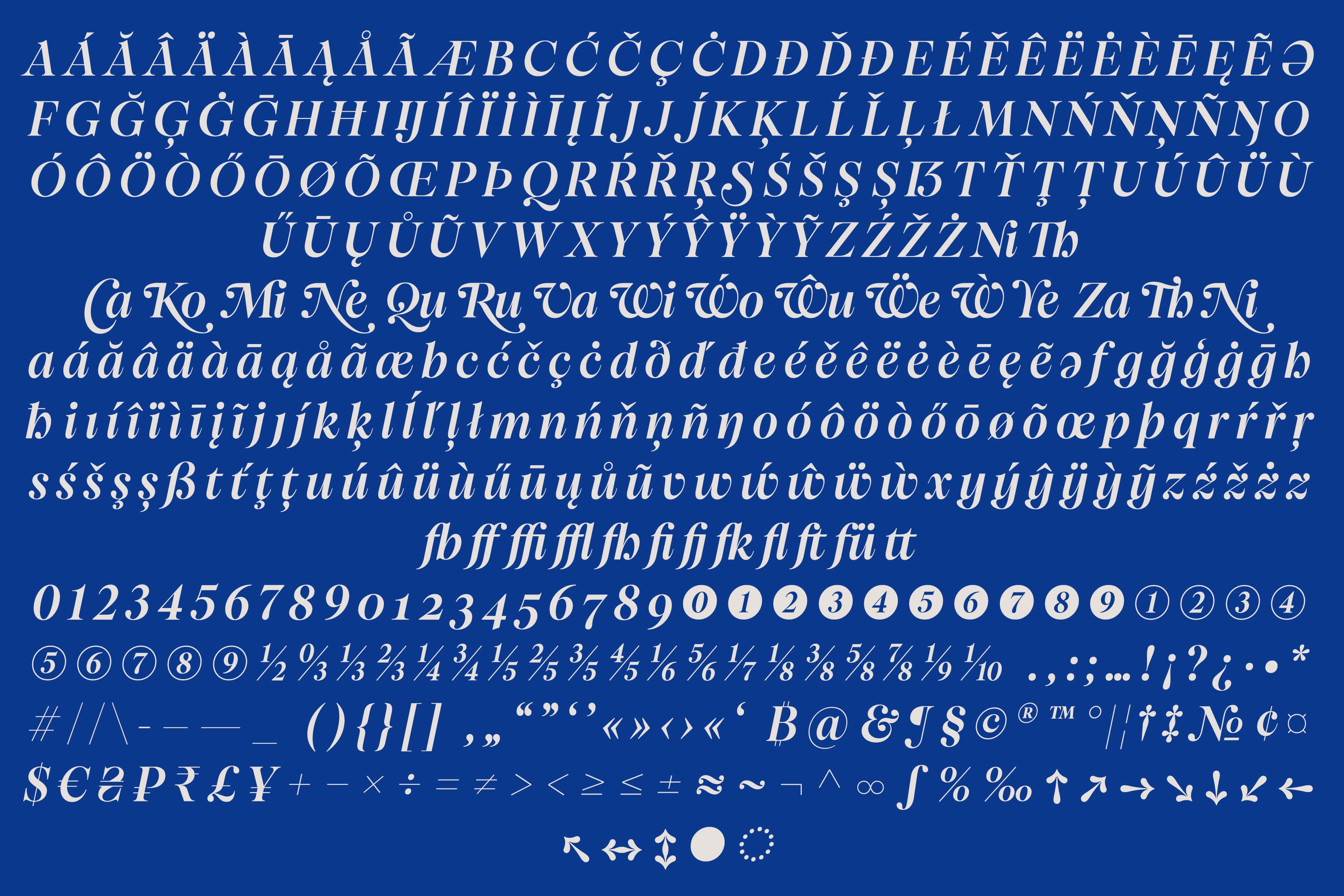
PP Pangaia
[2023]
Try for free → PANGRAM PANGRAM
A typeface seamlessly blending the splendour of traditional serif fonts with the rough, raw, organic beauty of Mother Nature.
Drawing directly from the wonder of the Earth and its flora and fauna, Pangaia’s fluid curves inhabit the gentle contours of leaves, riverbanks, and mountain slopes – capturing the joyful, harmonious connection between type, texture and terra firma.
Each character in Pangaia is meticulously crafted to evoke imagery of the ground on which we walk – planting itself like the roots of ancient woodland or the rough, rugged foundation of the Earth itself – with serifs blossoming like skyward branches. Its smooth, undulated lines emulate the unprescribed shapes of natural landscapes – the soft, rolling hills and the tranquillity of waters calm.
As one, Pangaia inhabits and enlivens our unity with the Earth, both celebrating and making aware of the delicate balance shared between us and the wider world, from its plunging, striking swashes to its powerful italic cuts across 18 total styles. No matter the application, be it brand, book and anything in between, Pangaia is more than just a typeface. Pangaia is a proud, earnest embodiment of nature’s uncorrupted grandeur – offering a sense of connection and respect for our planet through each and every structural form.
Designed in collaboration with Mat Desjardins & Francesca Bolognini
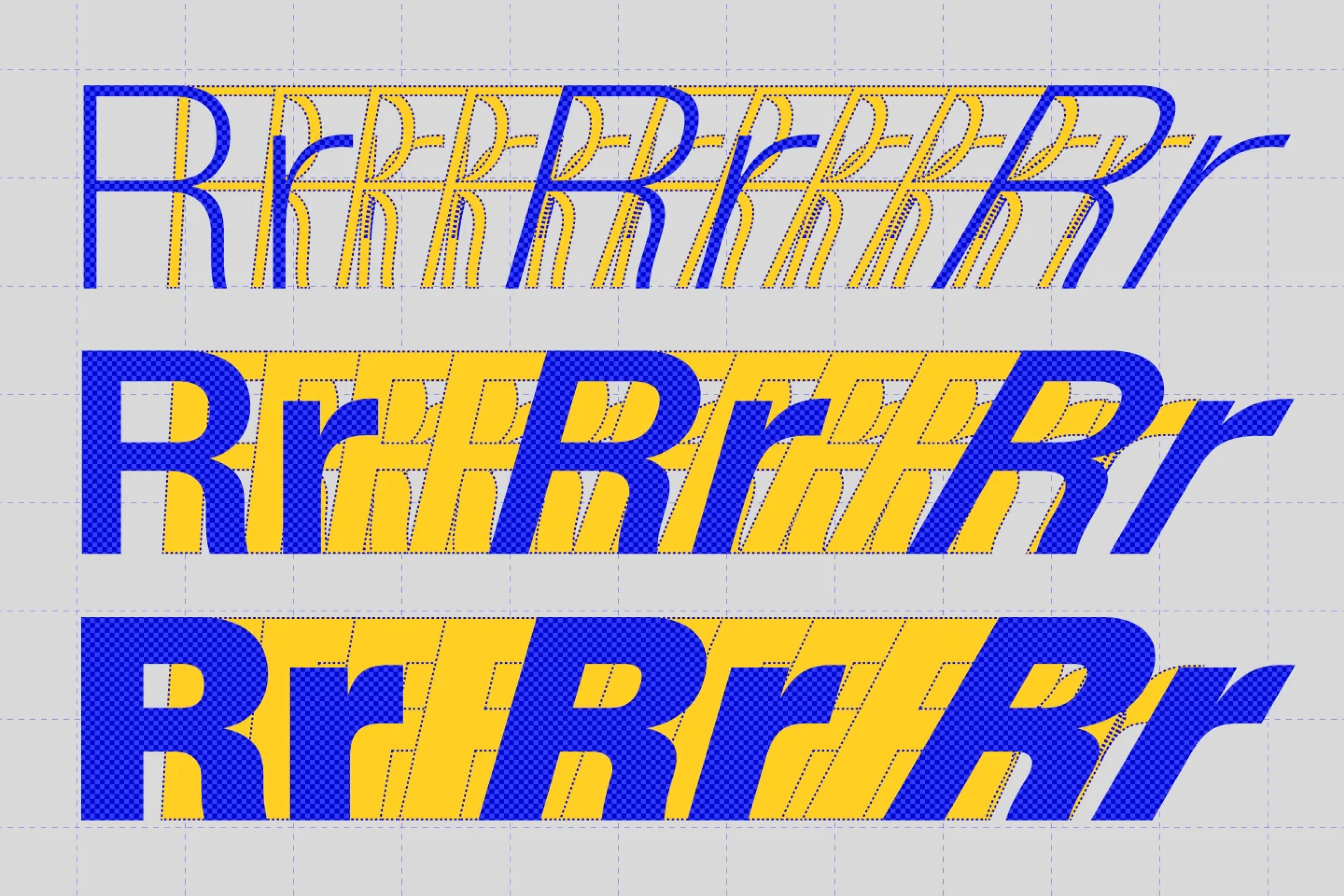
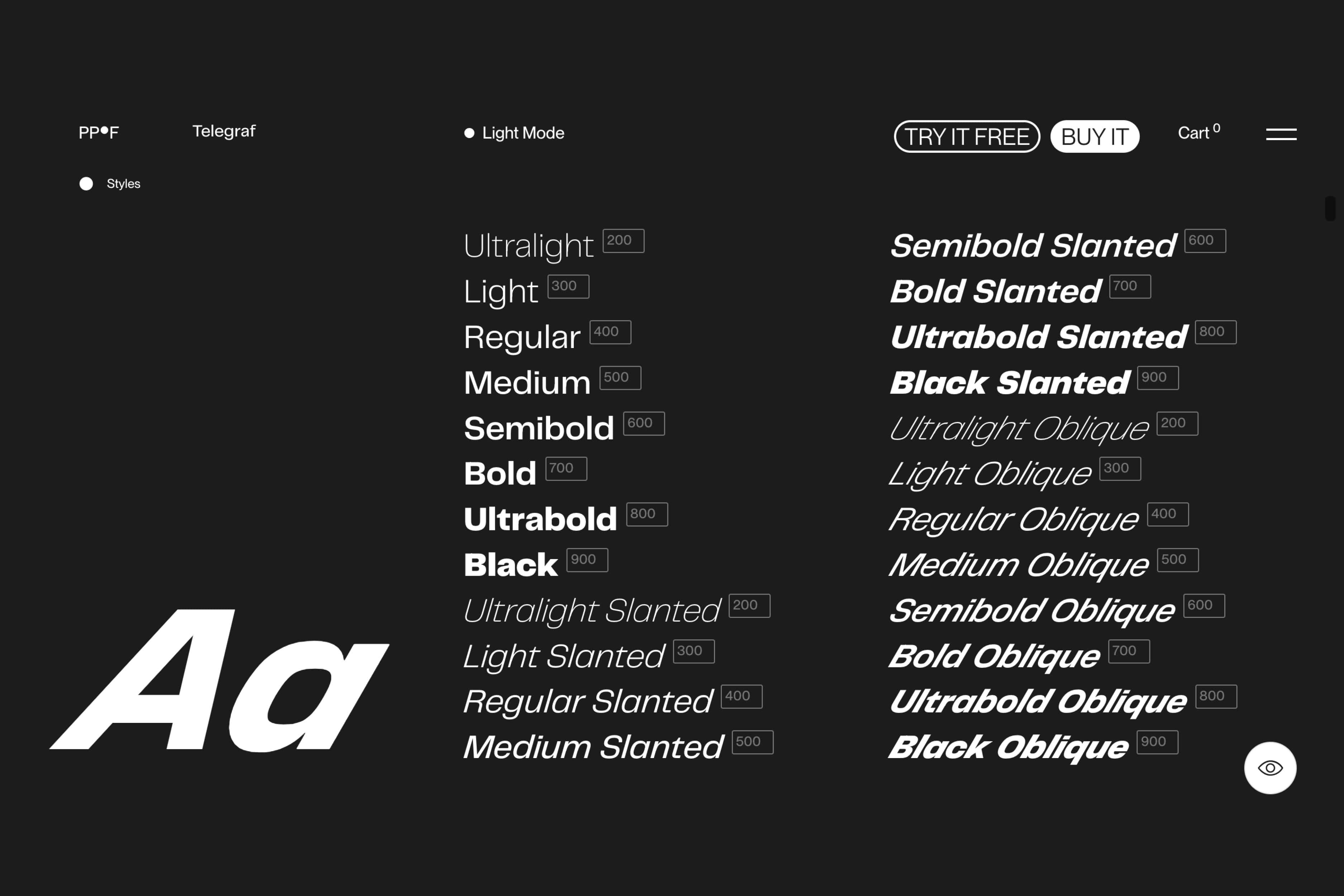
PP Telegraf
[2022]
Expansion (Oblique & Slanted) of the type family Telegraf, designed by Nick Losacco for Pangram Pangram Foundry.
→ PANGRAM PANGRAM WEBSITE
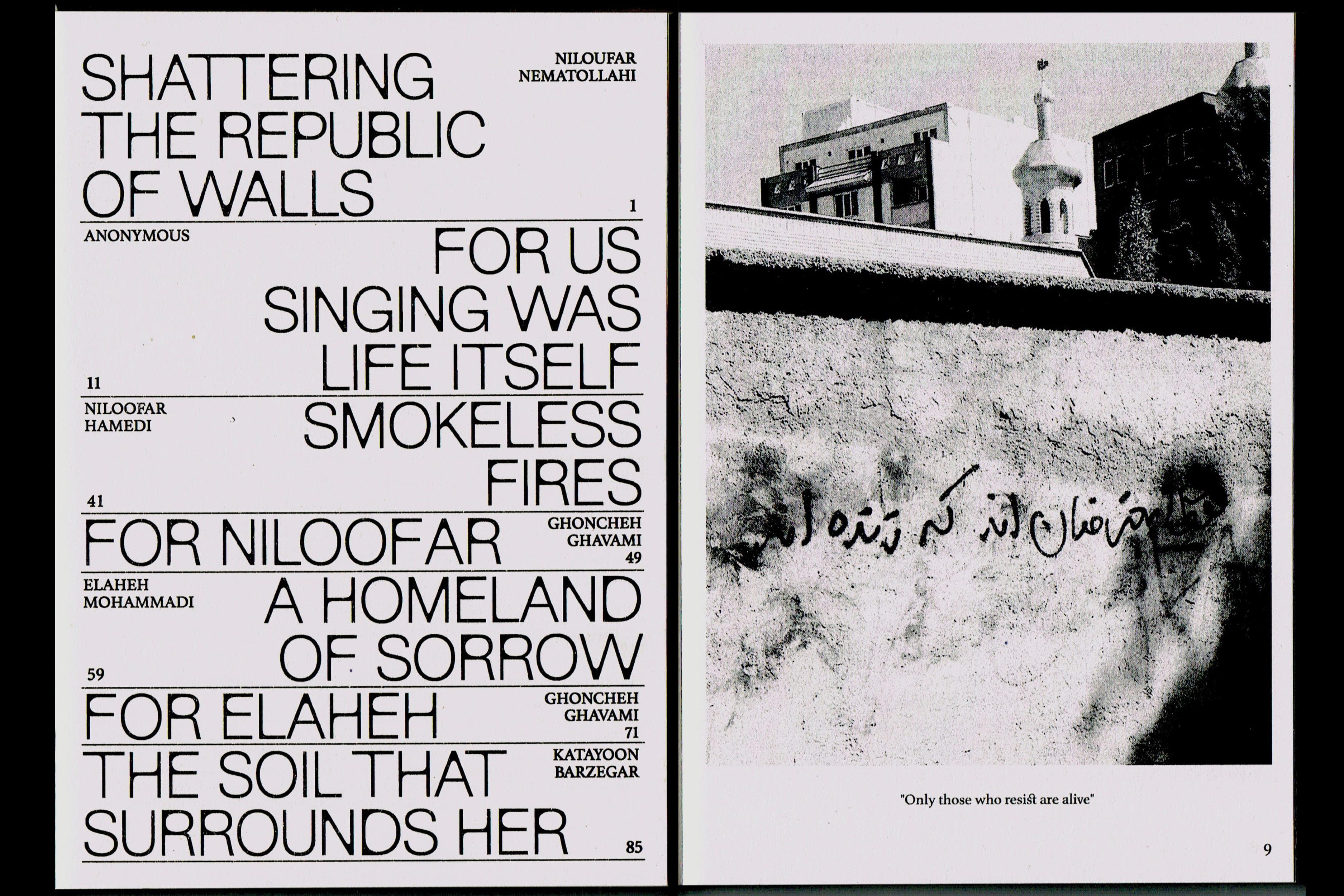
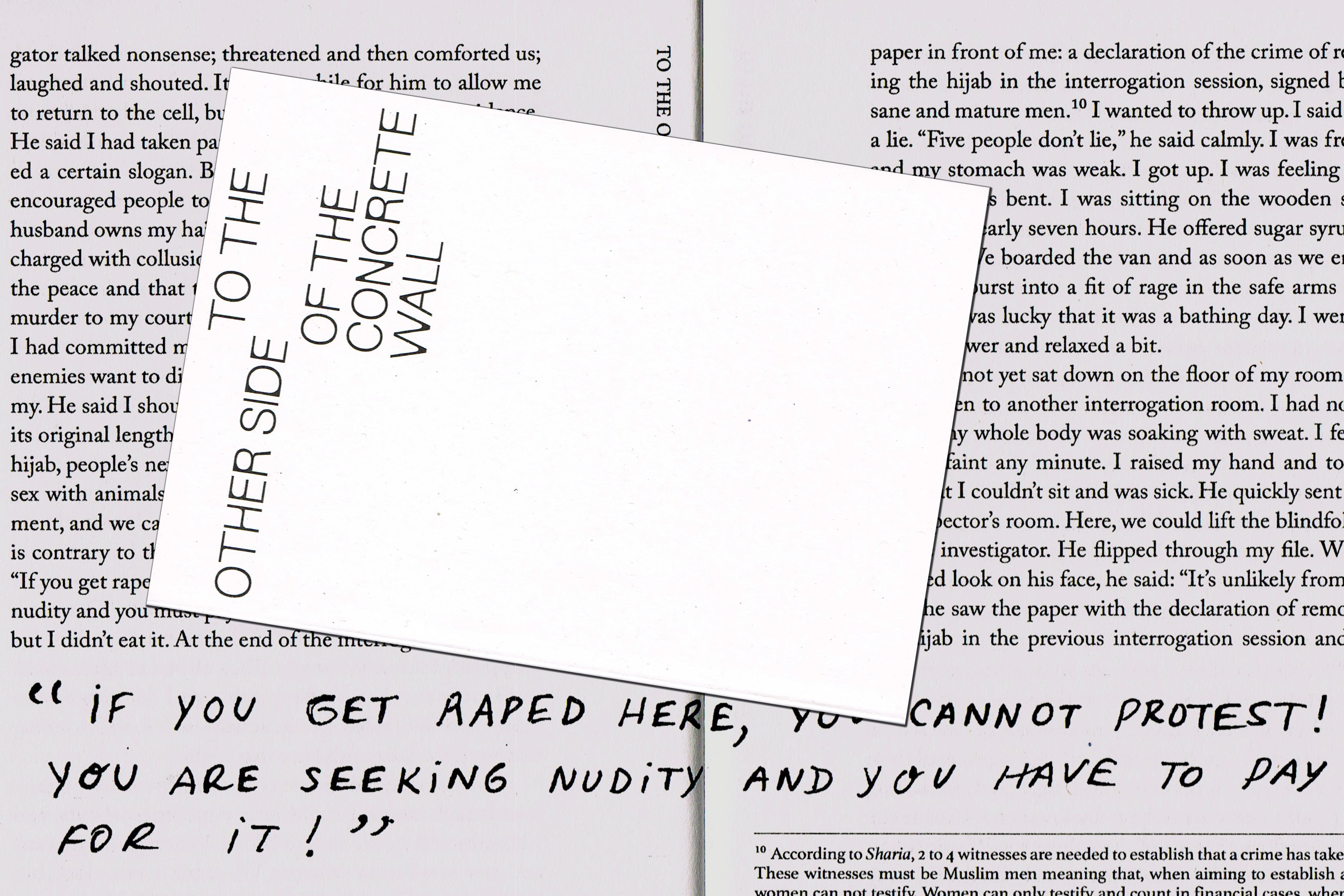
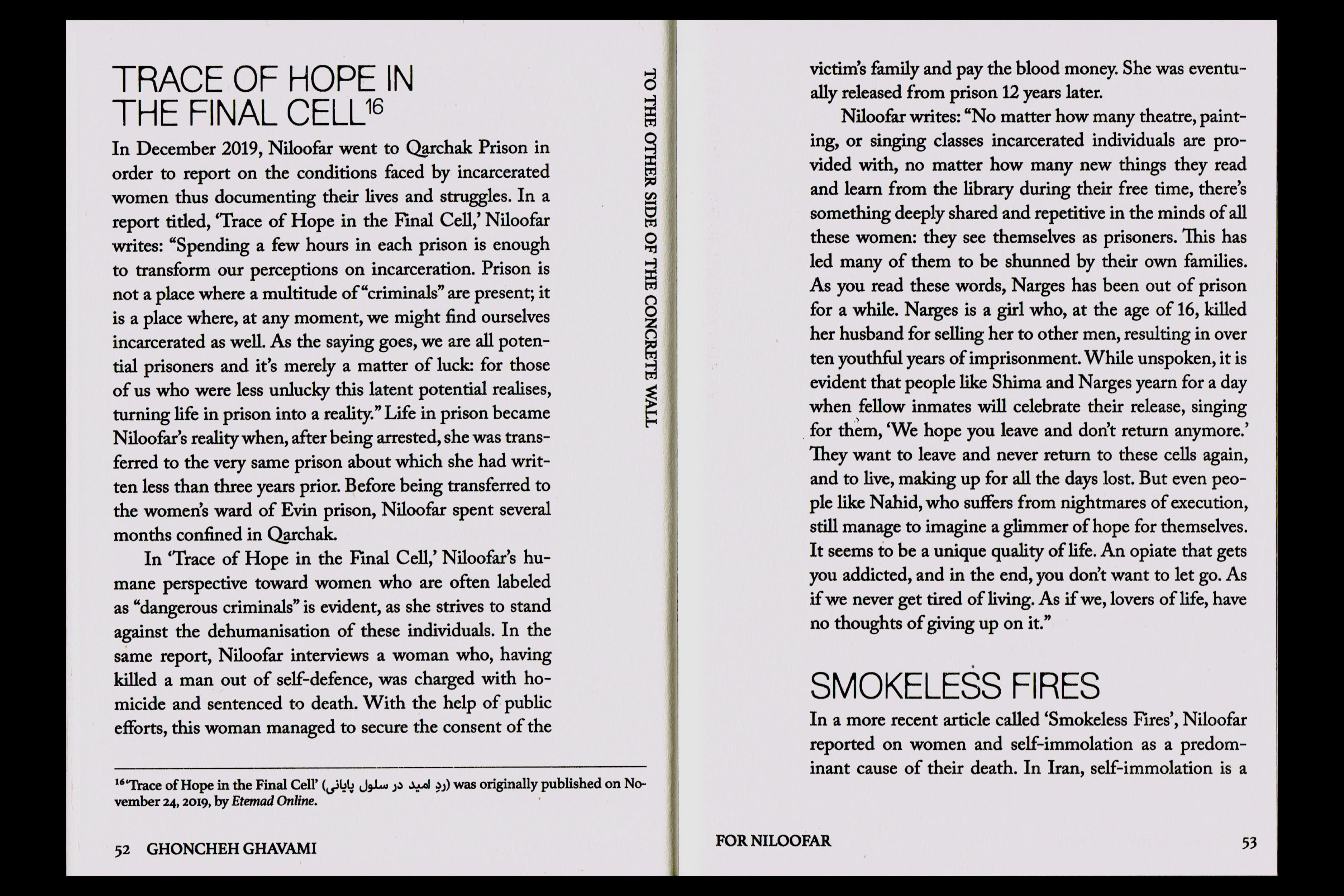
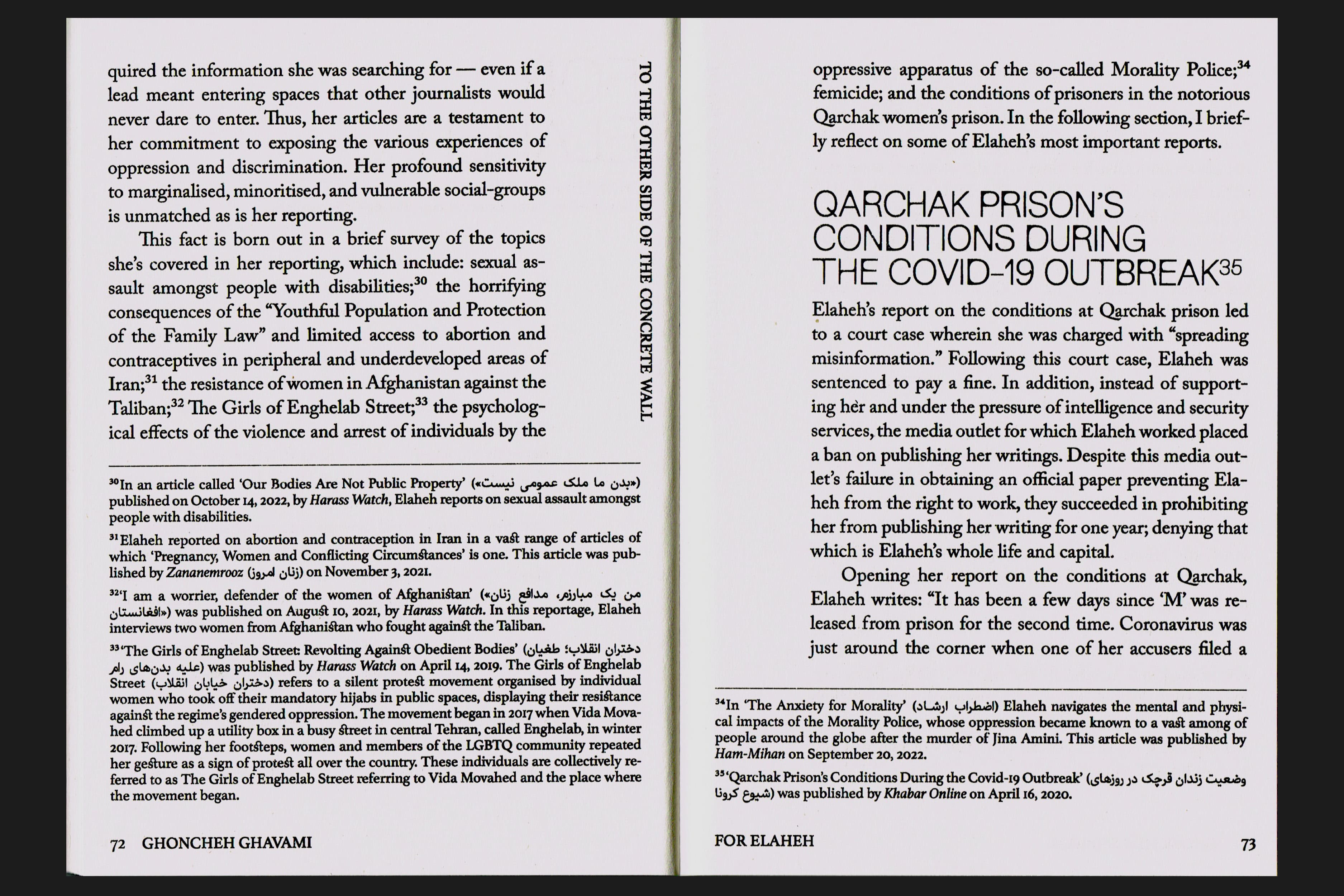
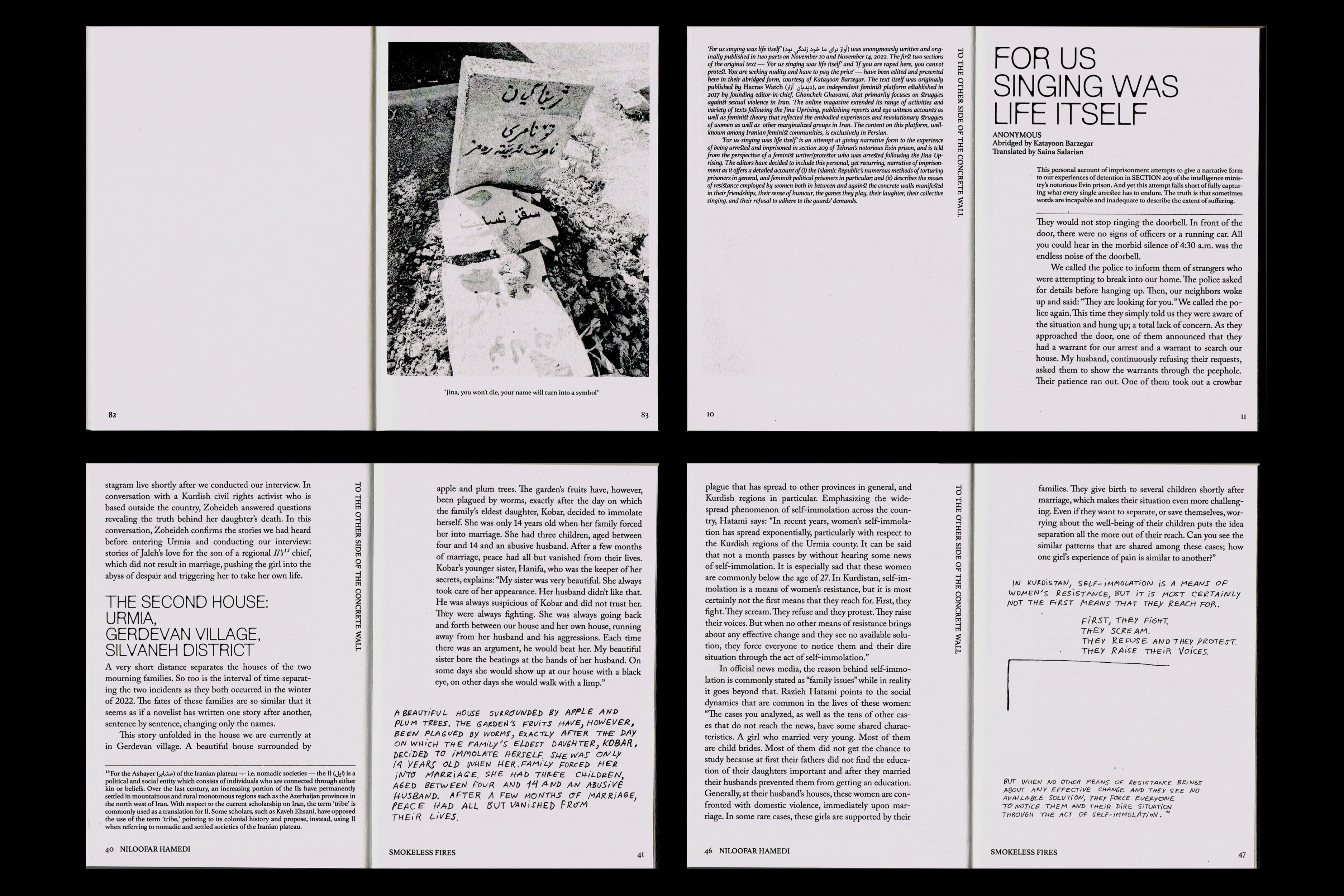
To The Other Side of The Concrete Wall
[2023]
Published by Jina Collective with support from BAK, basis voor actuele kunstst, Utrecht
Editors
Katayoon Barzegar
Niloufar Nematollahi
Jose Rosales
Essays
Ghoncheh Ghavami
Niloofar Hamedi
Elaheh Mohammadi
Translation
Saina Salarian
Nina Vabab
Niloufar Nematollahi
Proofreading
Mahan Moalemi
Rawan Bouststany
Design
Samuel Salminen
Francisco Baquerizo Racines
Printing
no kiss?
Paper
Holmen Trend 70g/m²
Holmen Trend Vintage 70g/m²
Typefaces
NewEdge666 by Charlotte Rohde
Adobe Caslon by Carol Twombly
Athelas by José Scaglione, Sahar Afshar & Veronika Burian
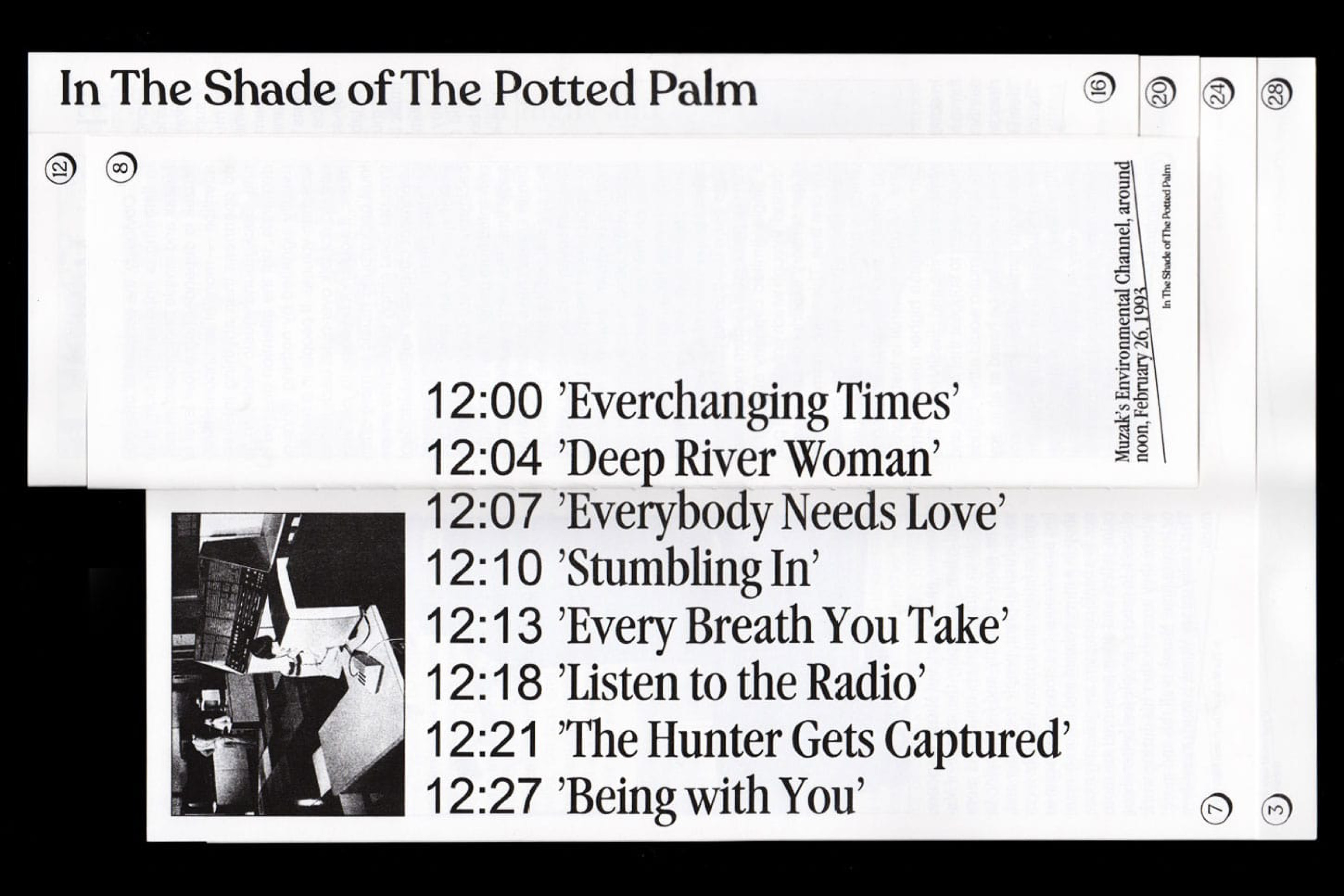
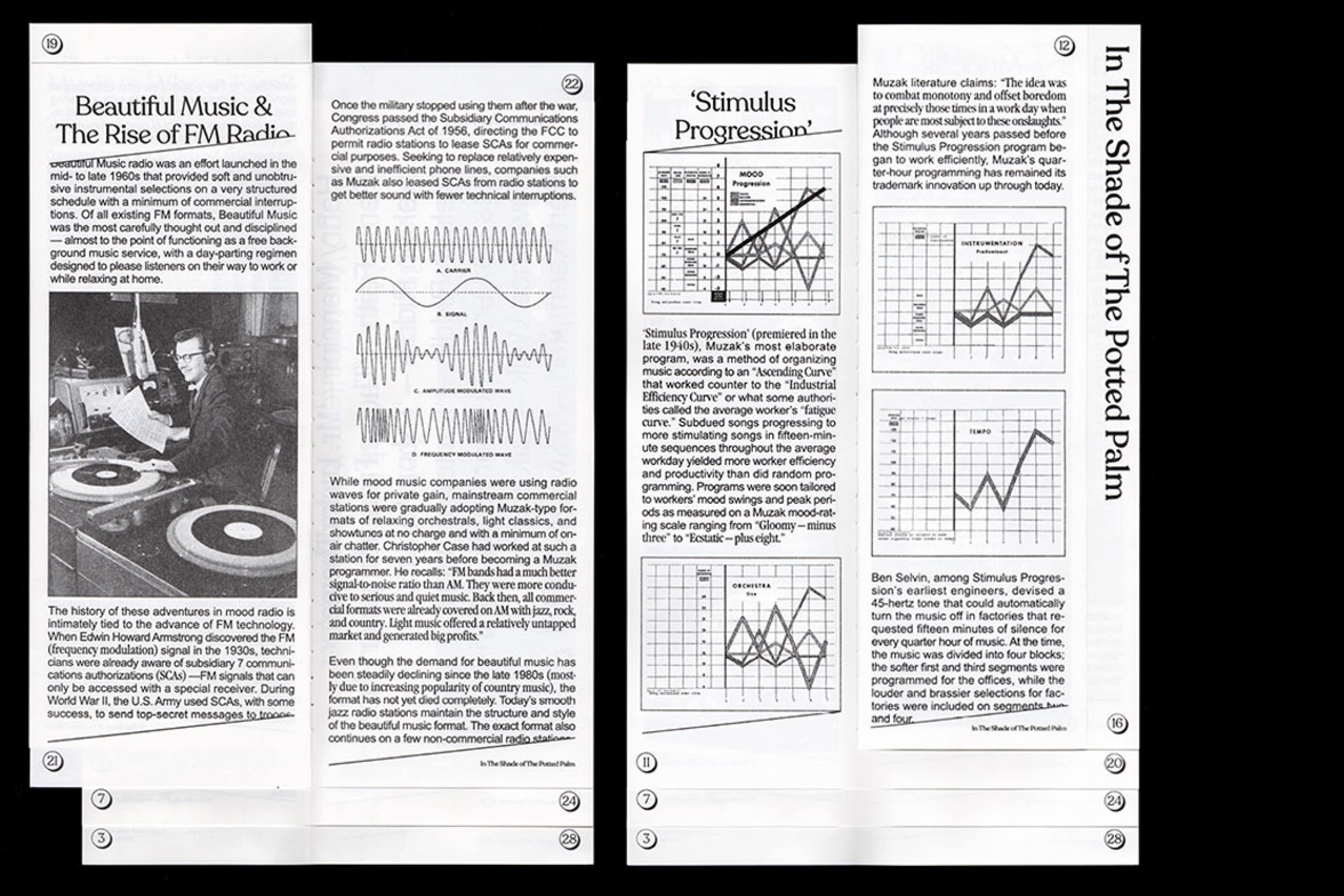
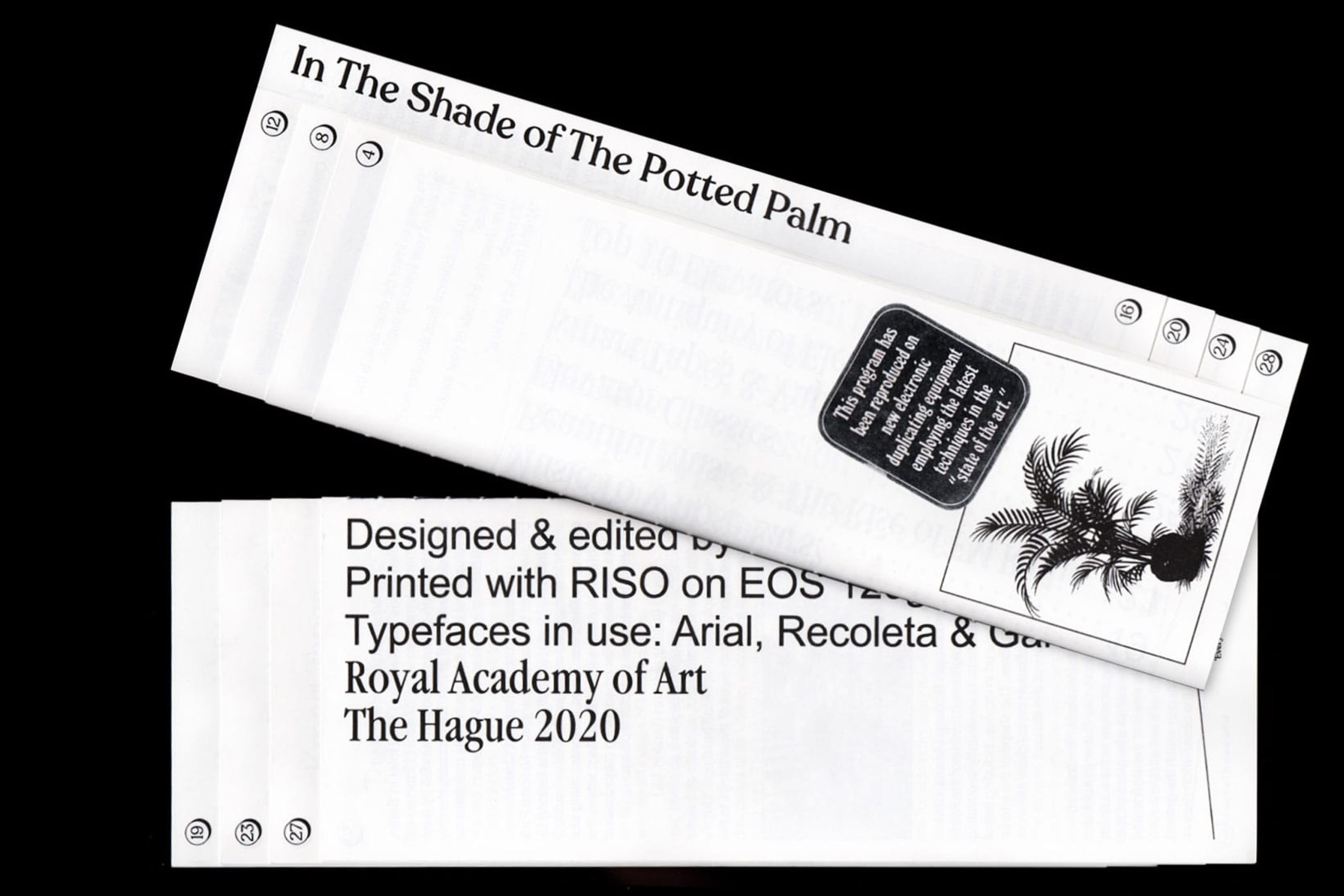
In The Shade of The Potted Palm
[2020]
A publication on the rise and fall of elevator music,
its impact on pop-culture and human psychology and the traces it left behind.
RISO-printed
30 Pages
Typefaces:
Garamond Narrow by Tony Stan
Arial by Robin Nicholas & Patricia Saunders
Recoleta by Jorge Cisterna
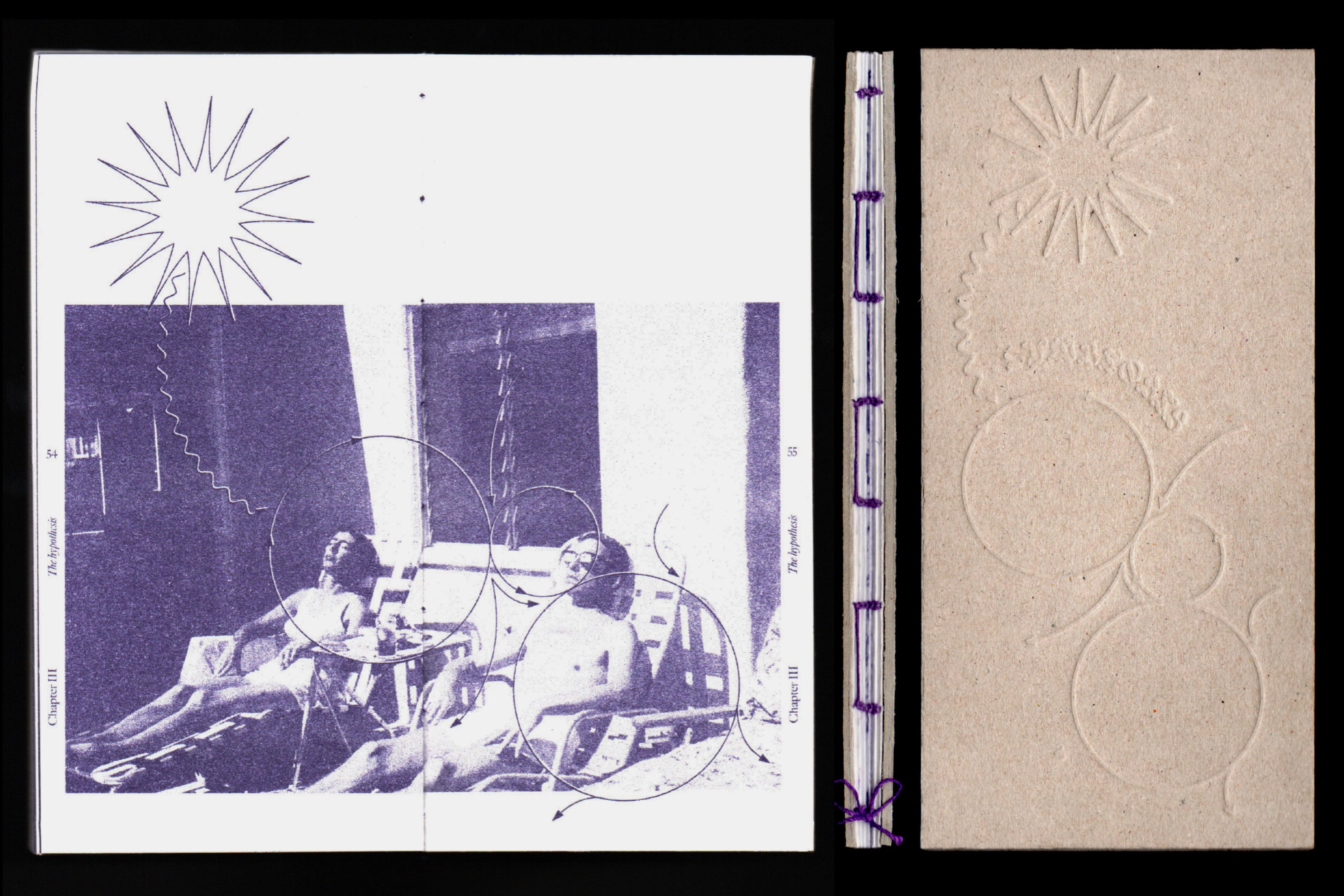
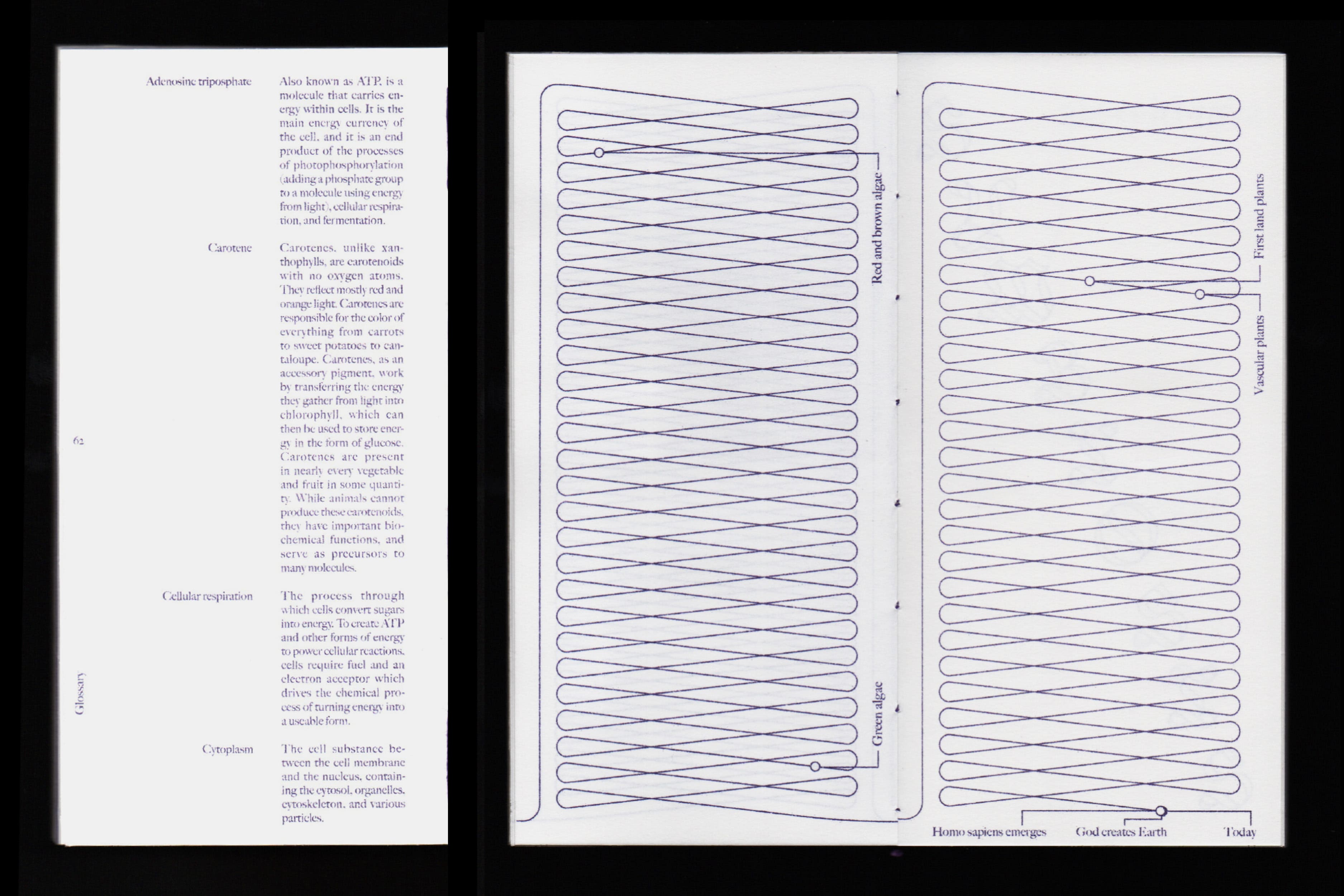
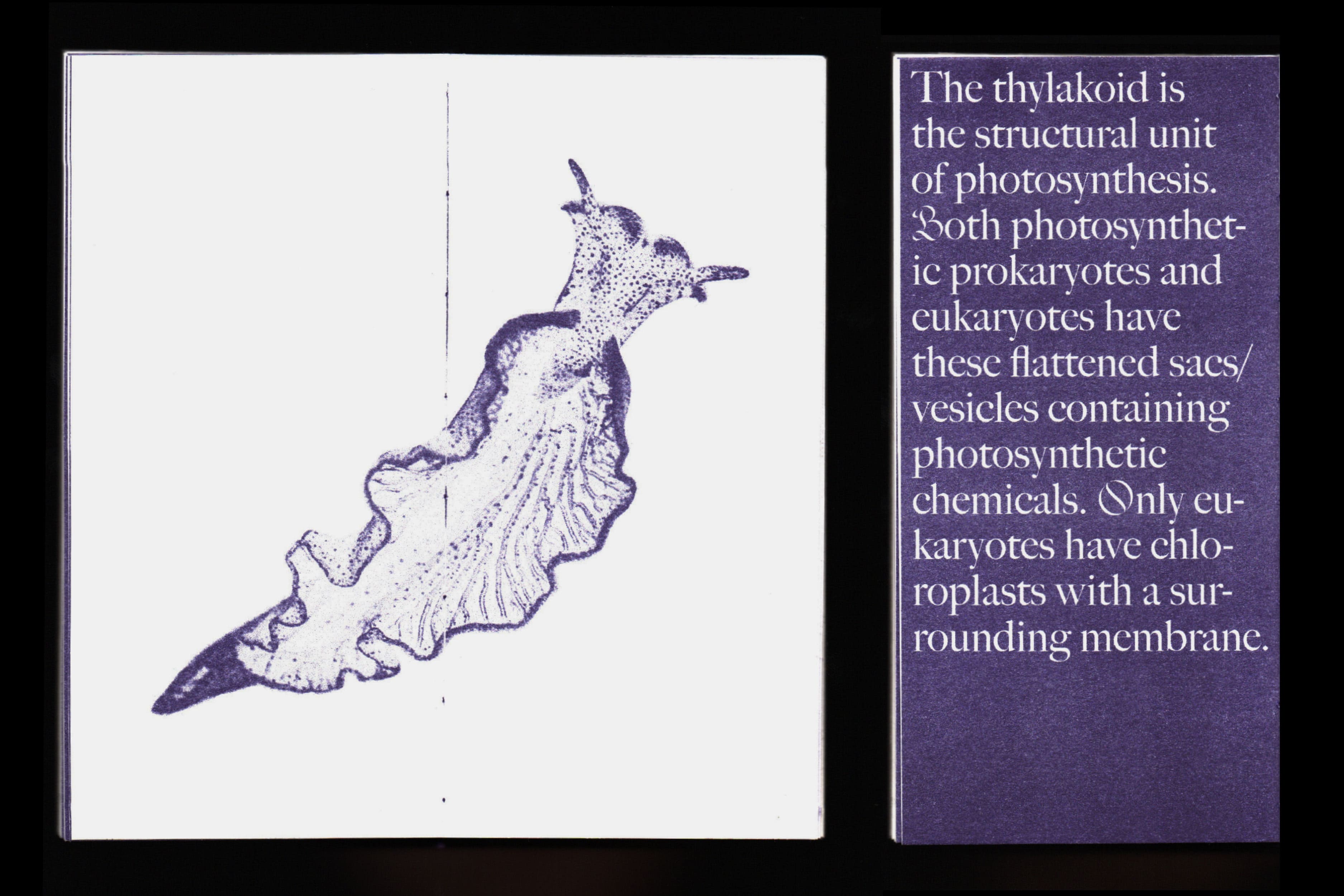
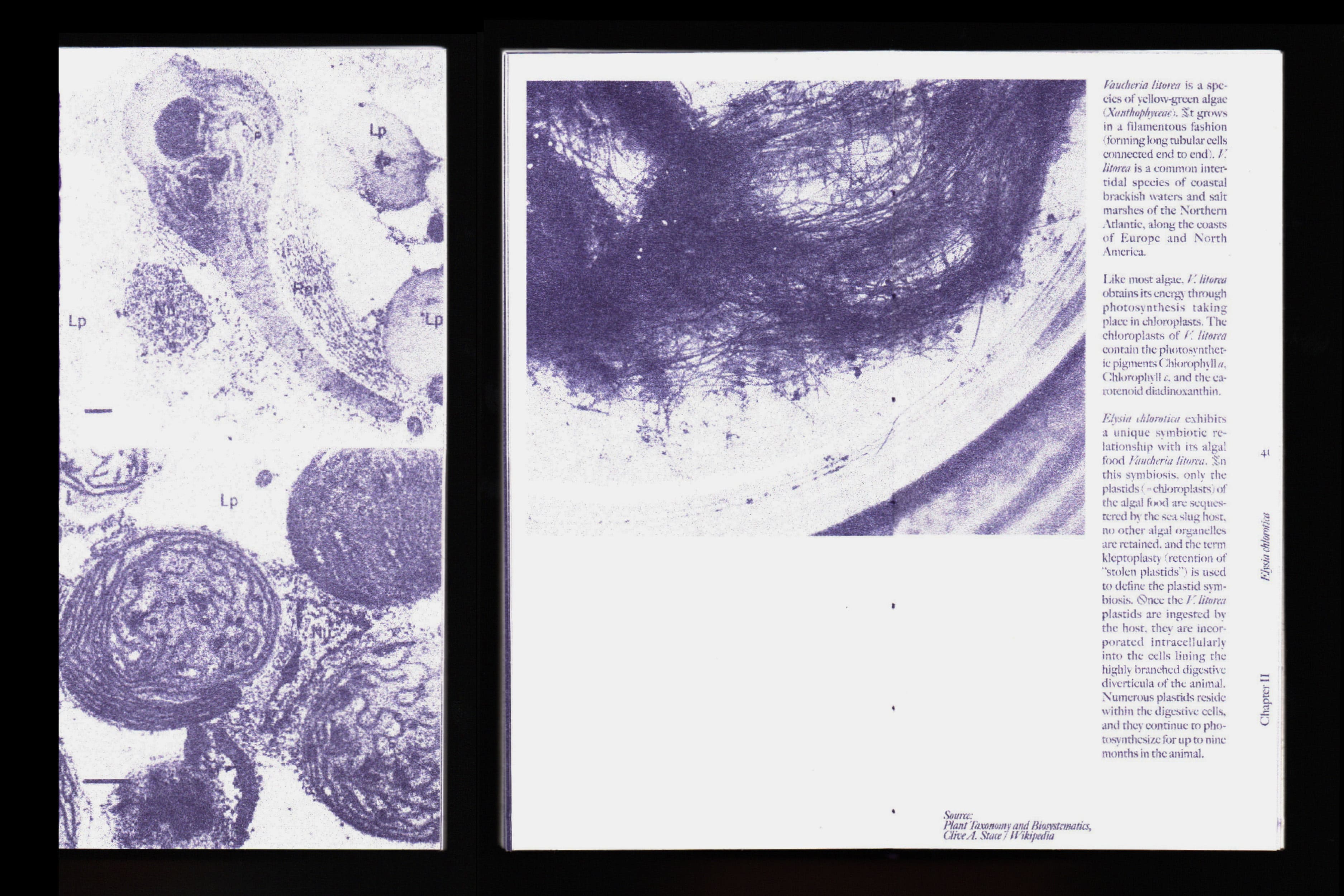
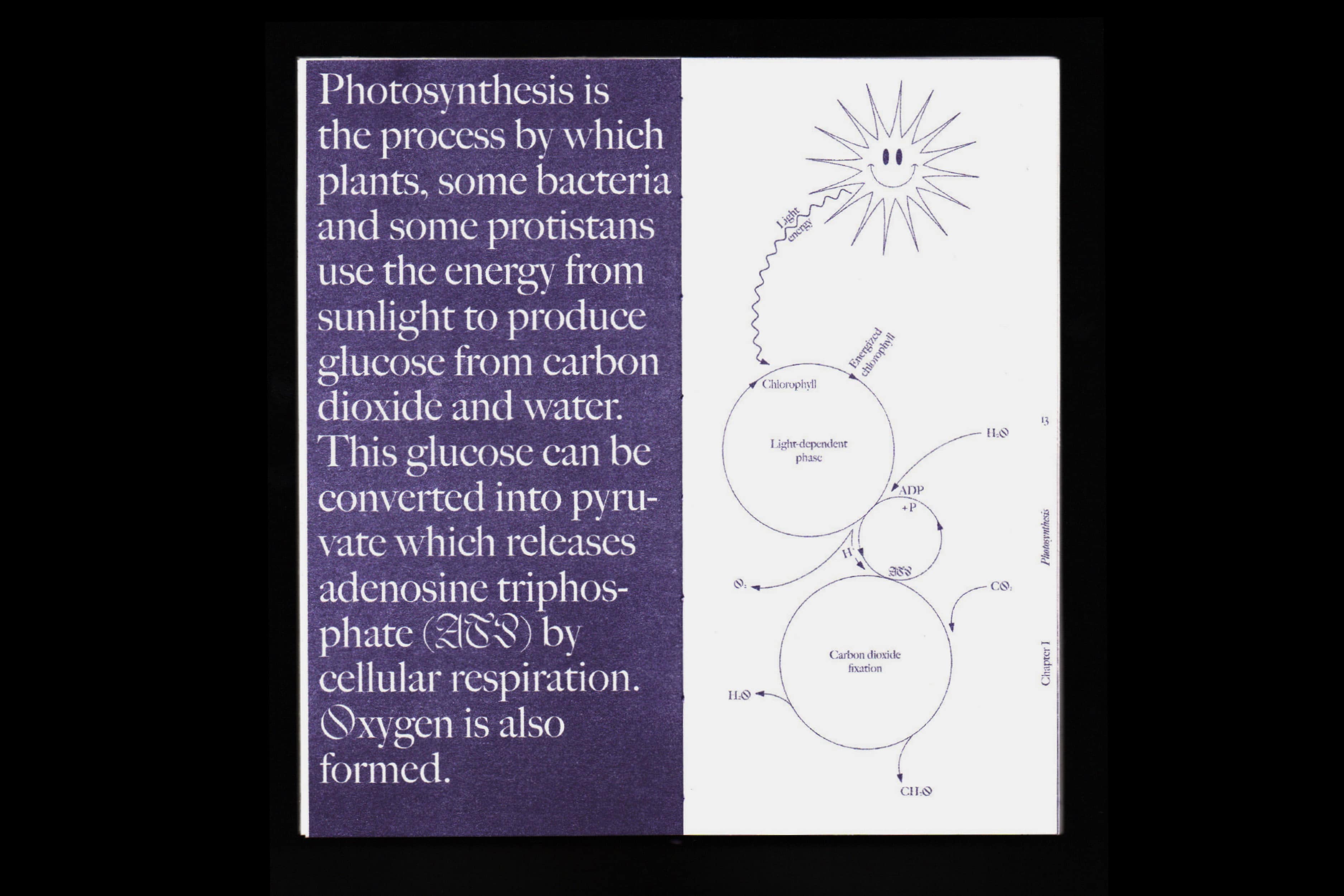
Symbiosis
[2019]
A research-focused publication discussing the possibilities of us humans having
the ability to photosynthesize by looking into the mysteries of horizontal gene transfer and by examining
the symbiotic relationship between a solar-powered sea slug and its algal food.
RISO-printed
72 pages
Typefaces:
Big Caslon by Matthew Carter
Jabin by Frida Medrano
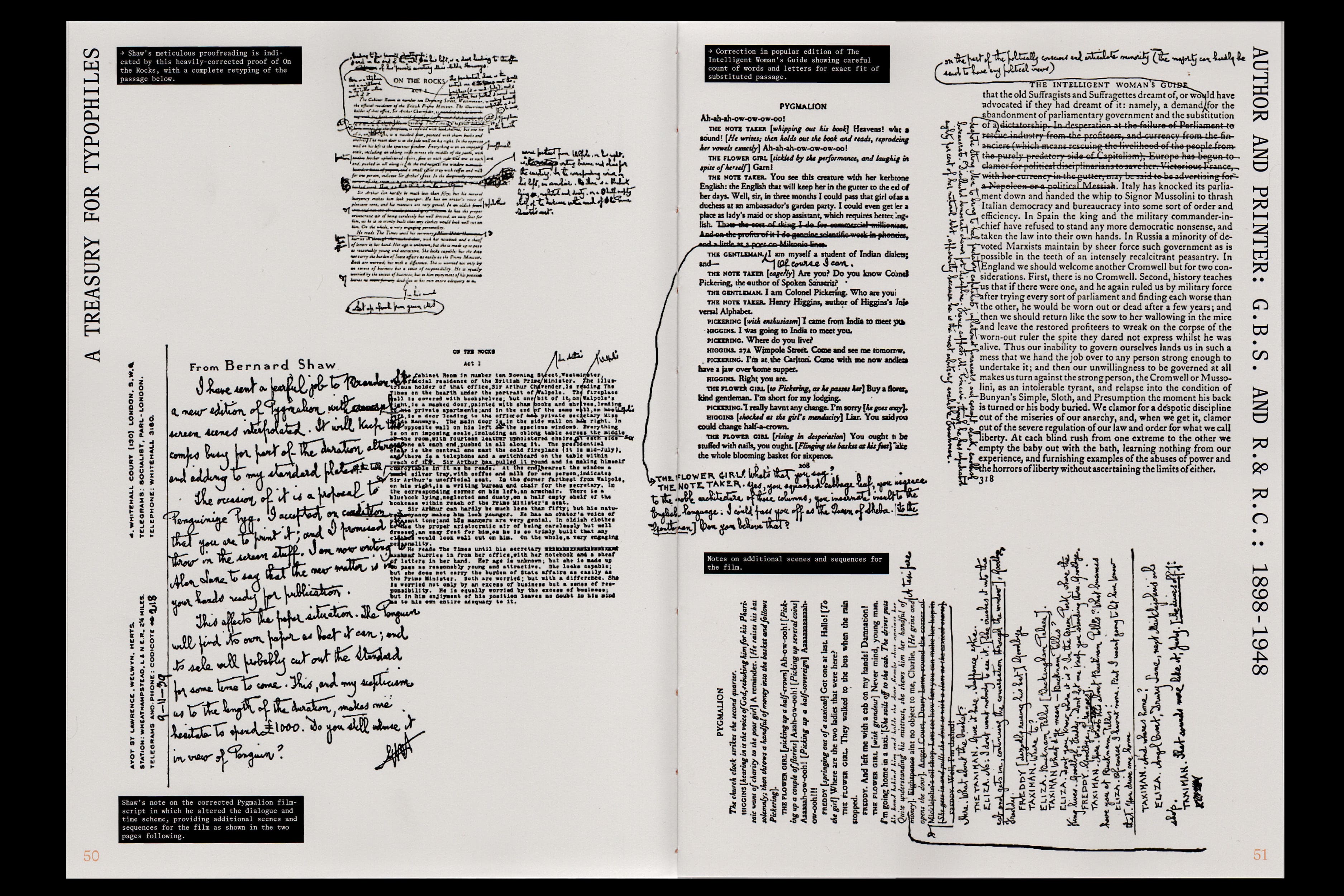
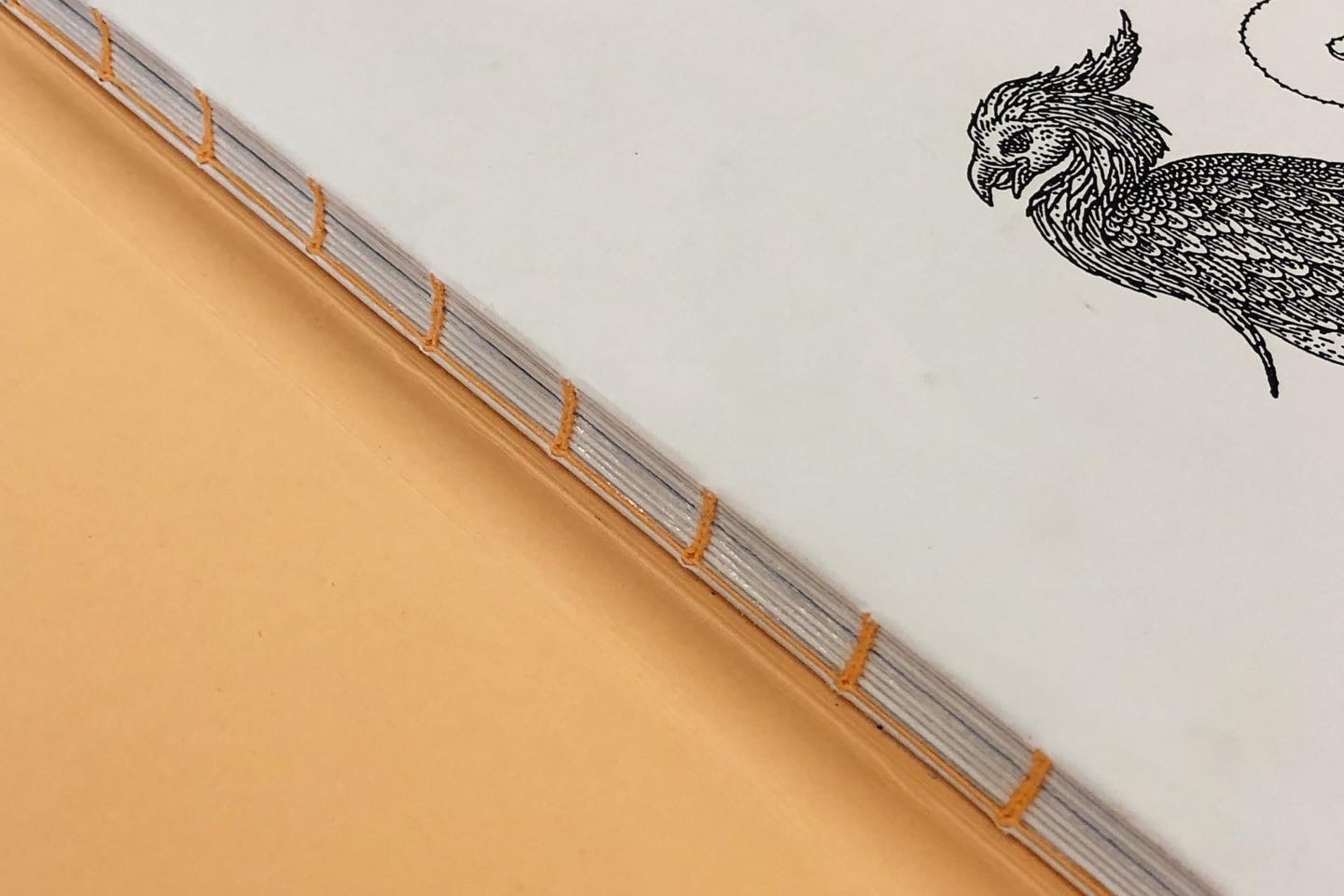
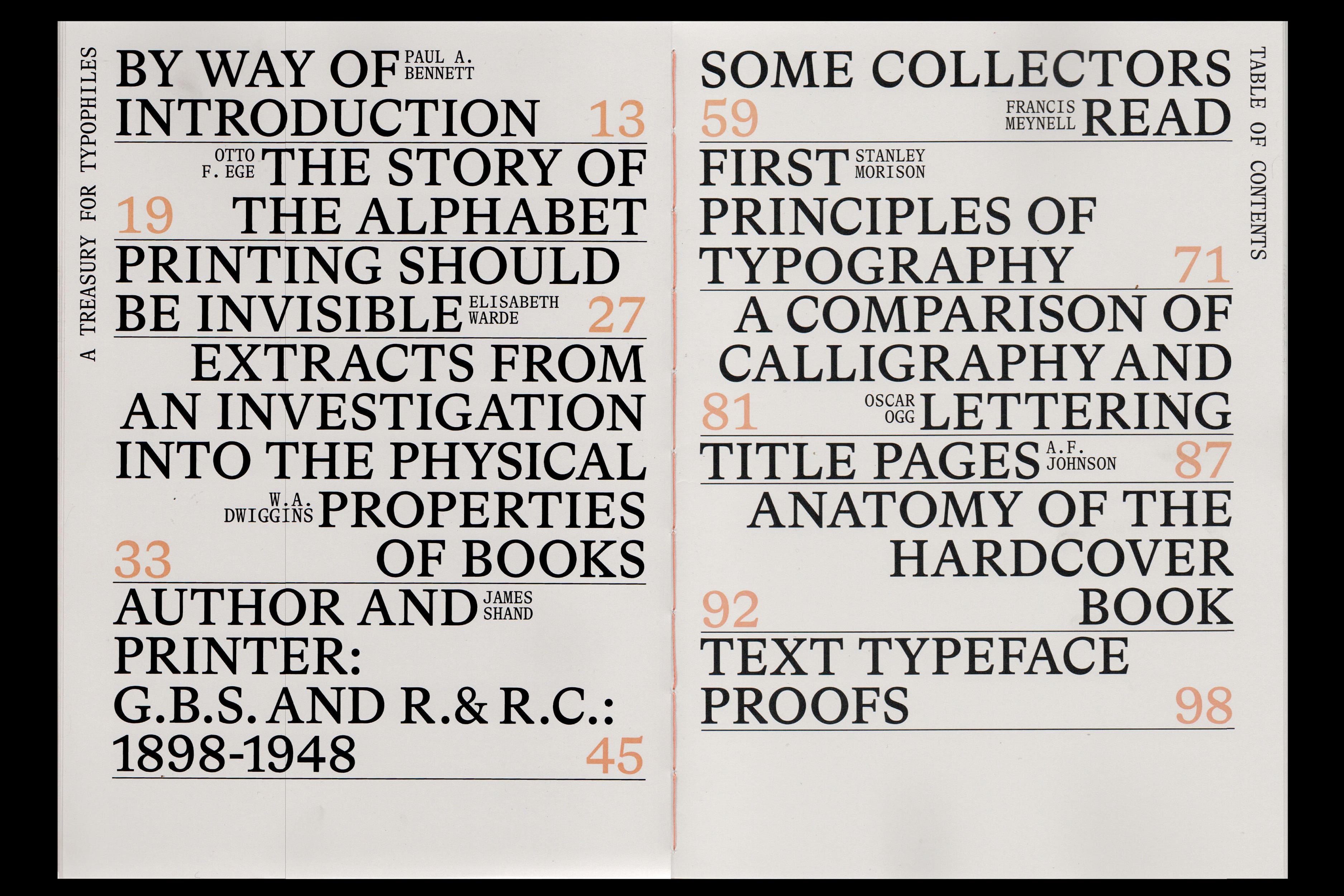
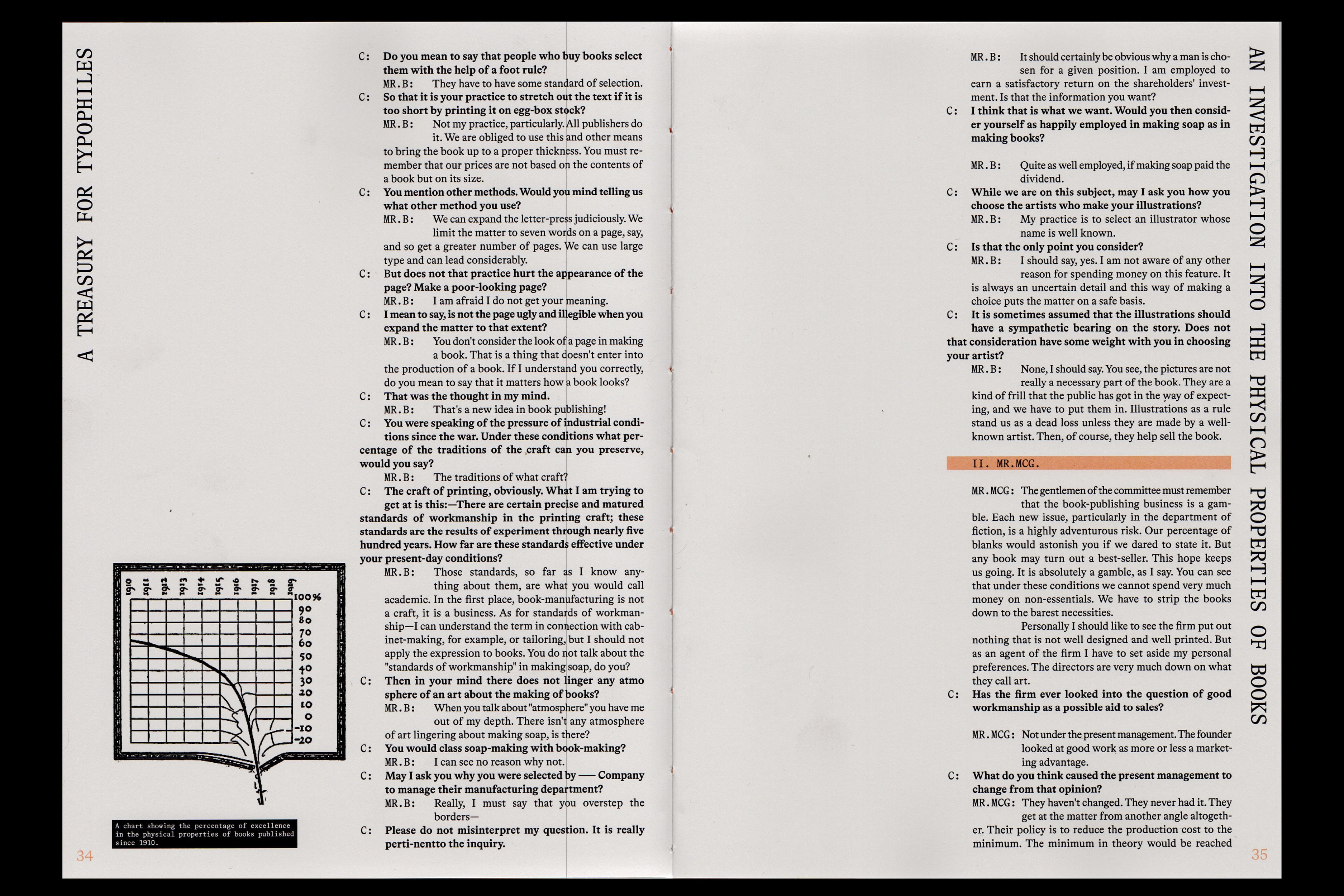
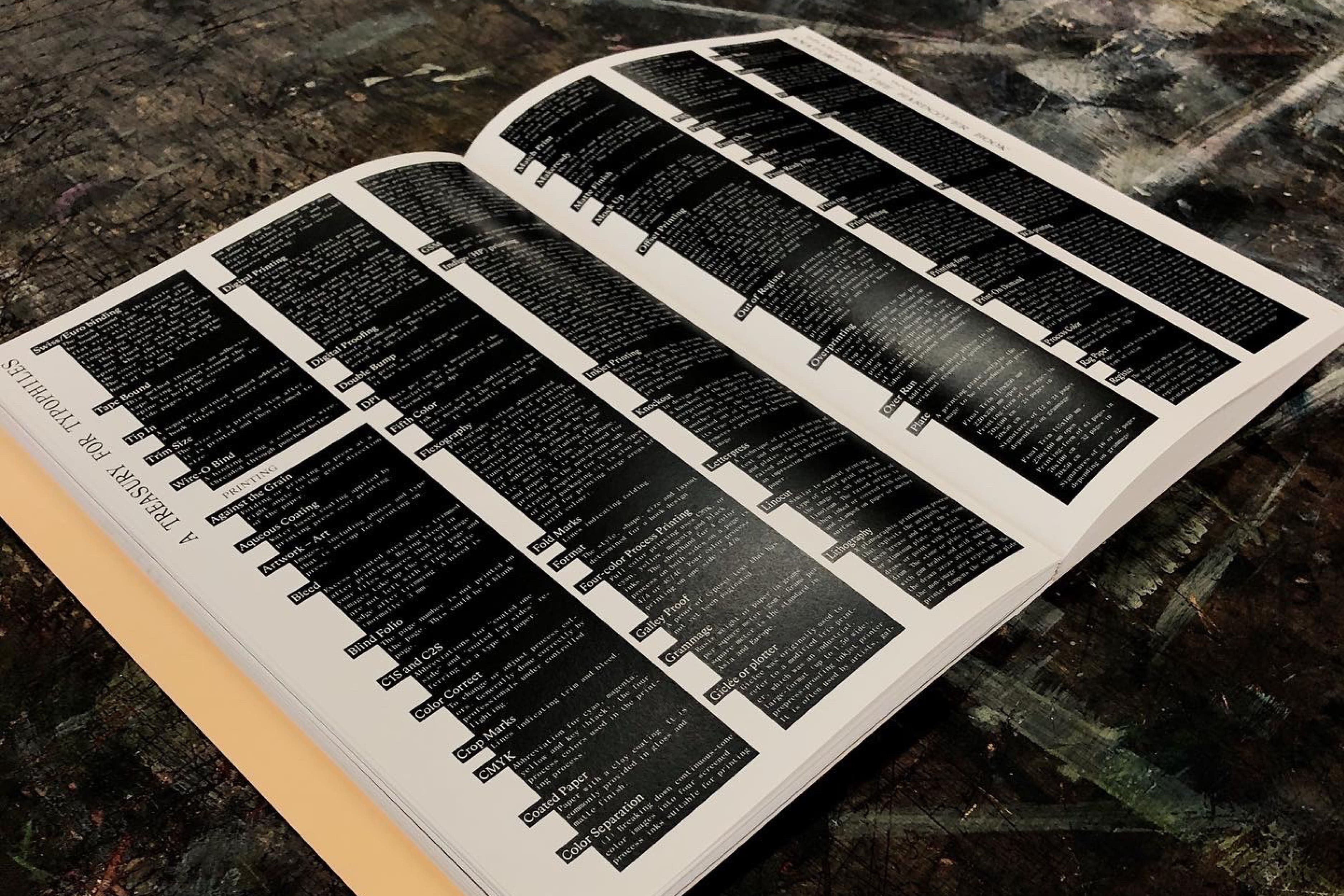
A Treasury for Typophiles
[2021]
A collection of essays on bookmaking and typography.
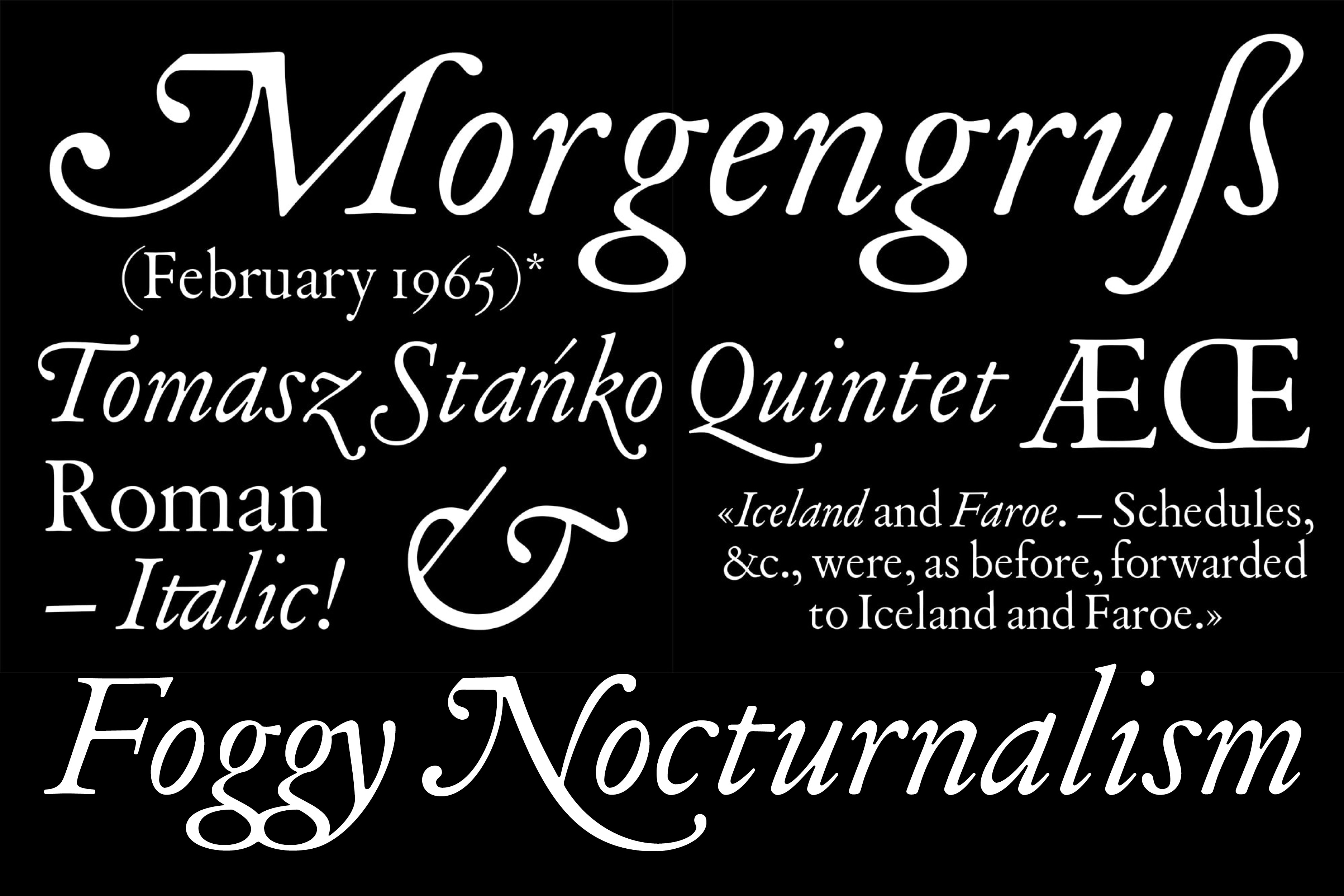
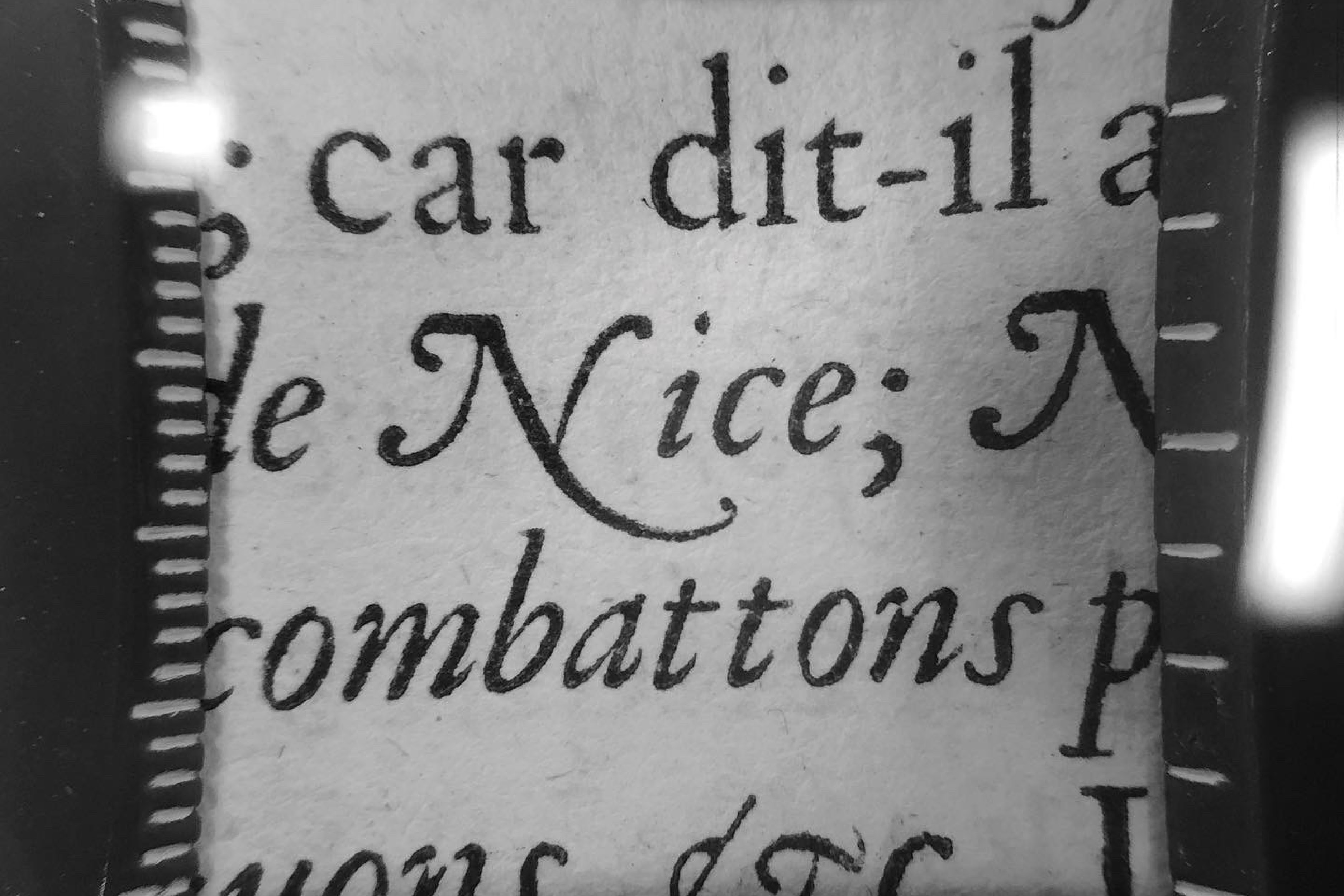
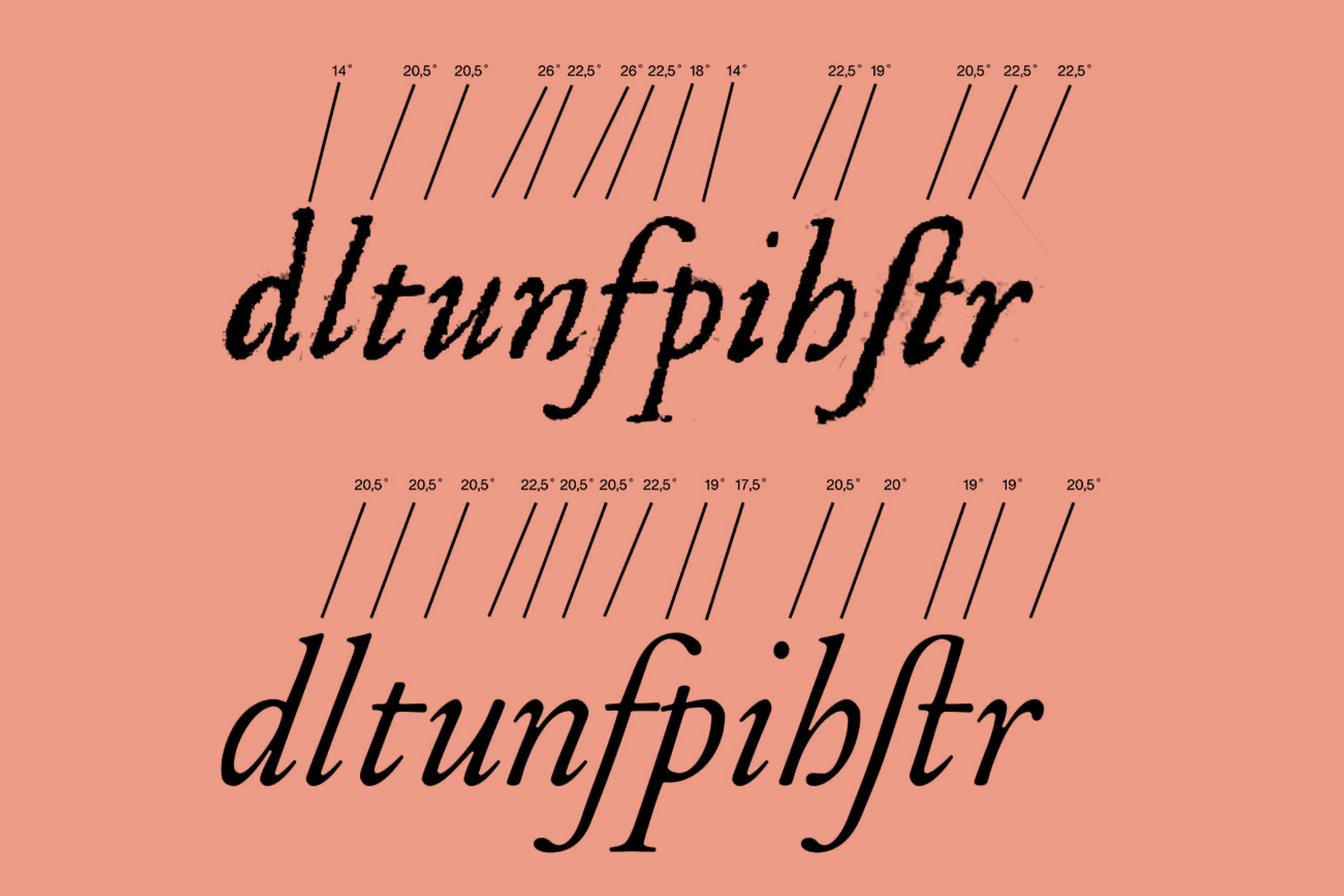
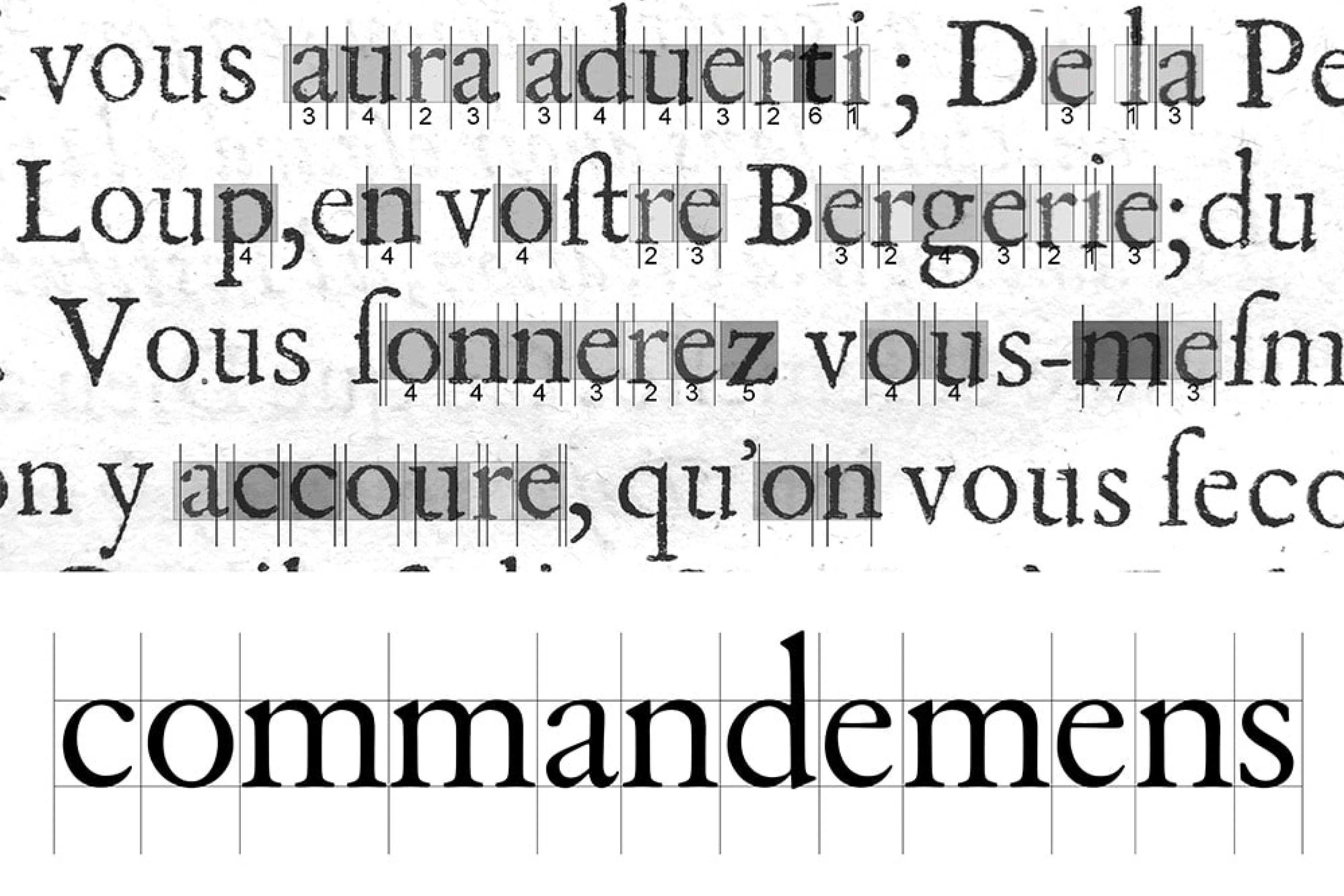
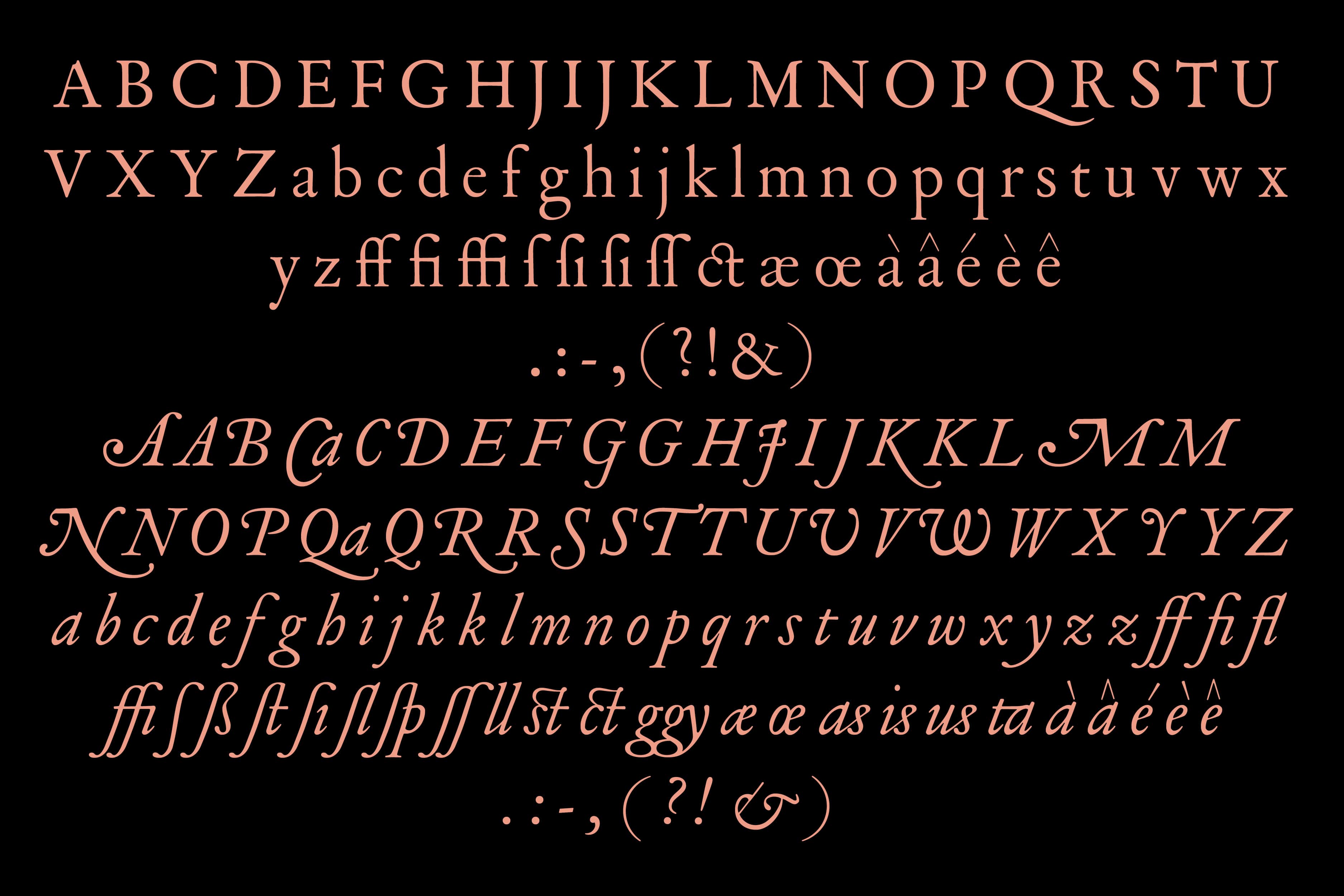
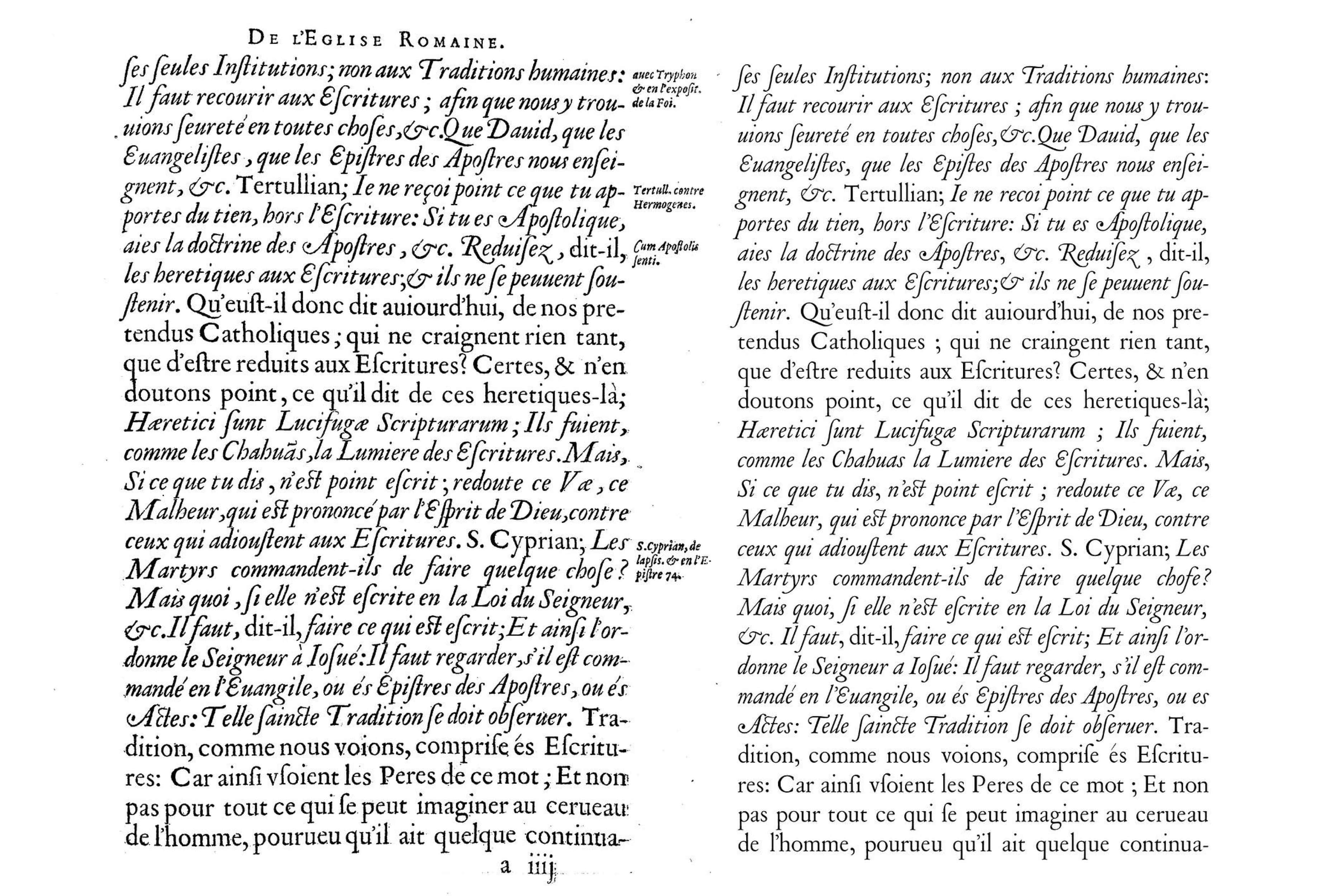
Hieronimus — A Study of French Renaissance Type
[2021]
By Barbara Strzeżek, Lara Dautun & Samuel Salminen
under guidance of Dr. Frank E. Blokland
Revival of Renaissance types by Pierre Haultin and Francois Guyot. The source material for this work was De l'institution, usage et doctrine du sainct sacrament, published by Ph. de Mornay (La Rochelle, H. Haultin, 1598). The project included two styles; a roman lowercase derived from Guyot's Double-Pica (Ascendonica, Gros-parangon) (1544), most likely punched by a La Rochelle punch-cutter, paired with capitals of La Rochelle Double-Pica Roman by Haultin (1598) and Guyot's Double-Pica (Ascendonica, Gros-parangon) Italic (1557).


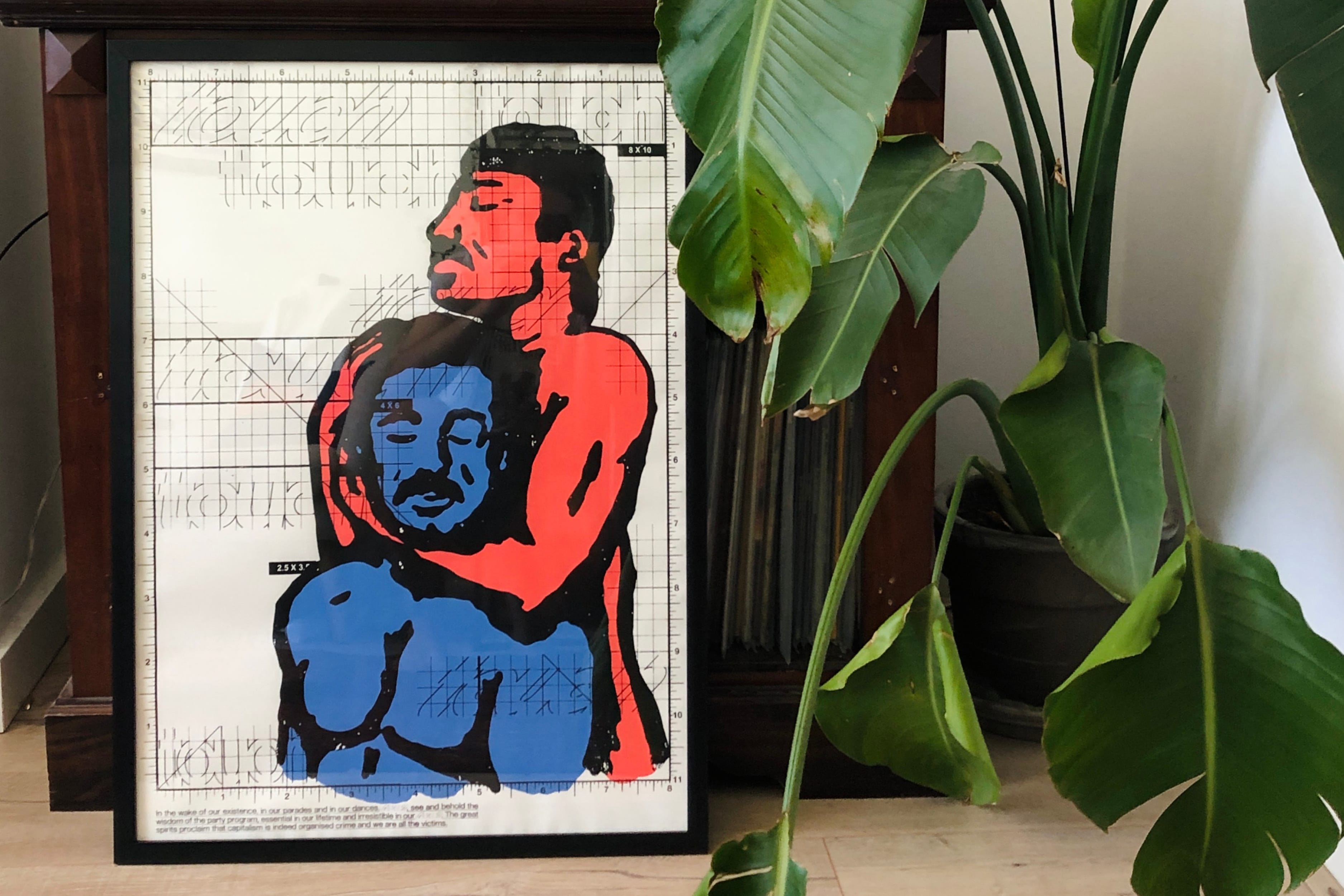
Selection of Posters
[2021–2022]
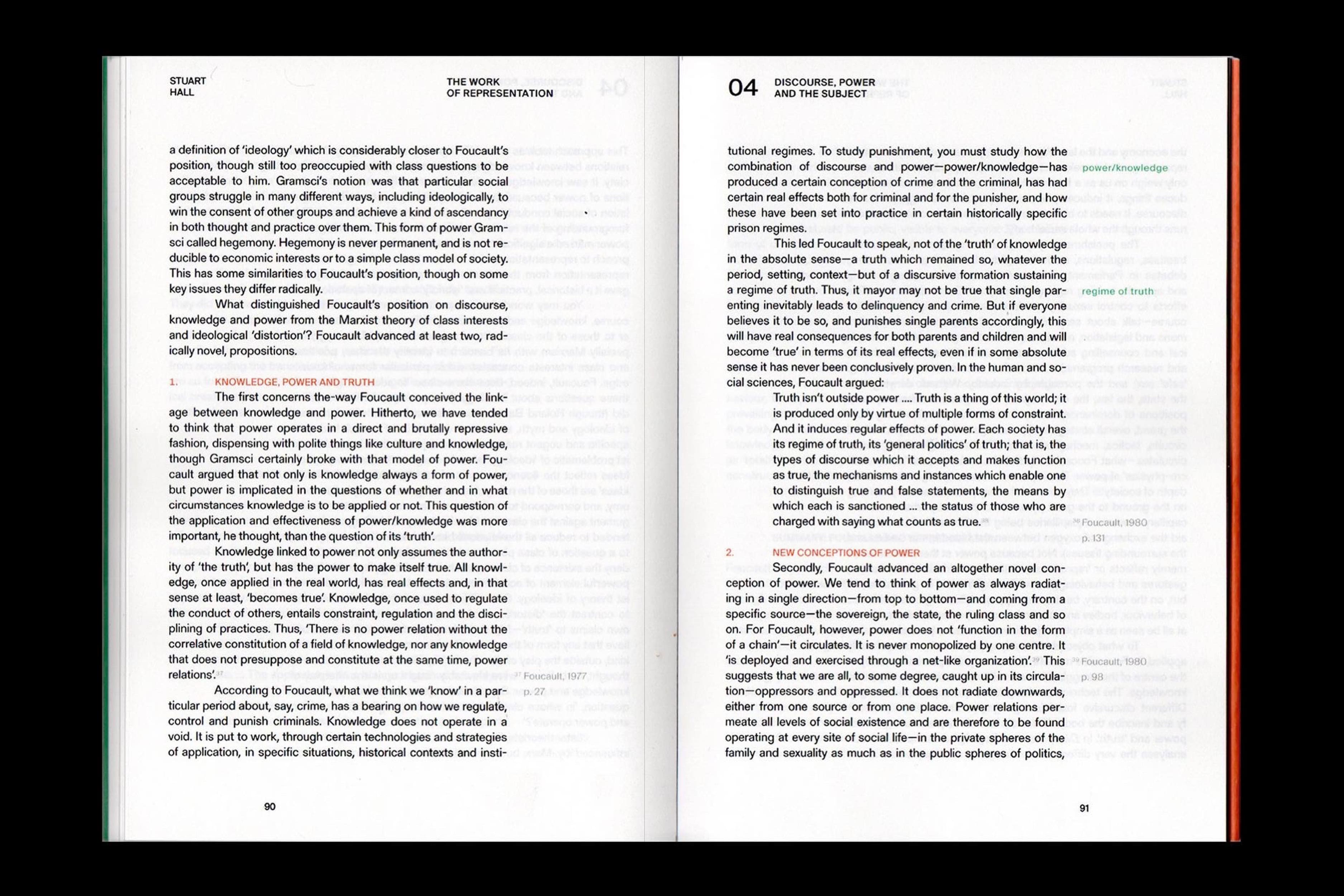


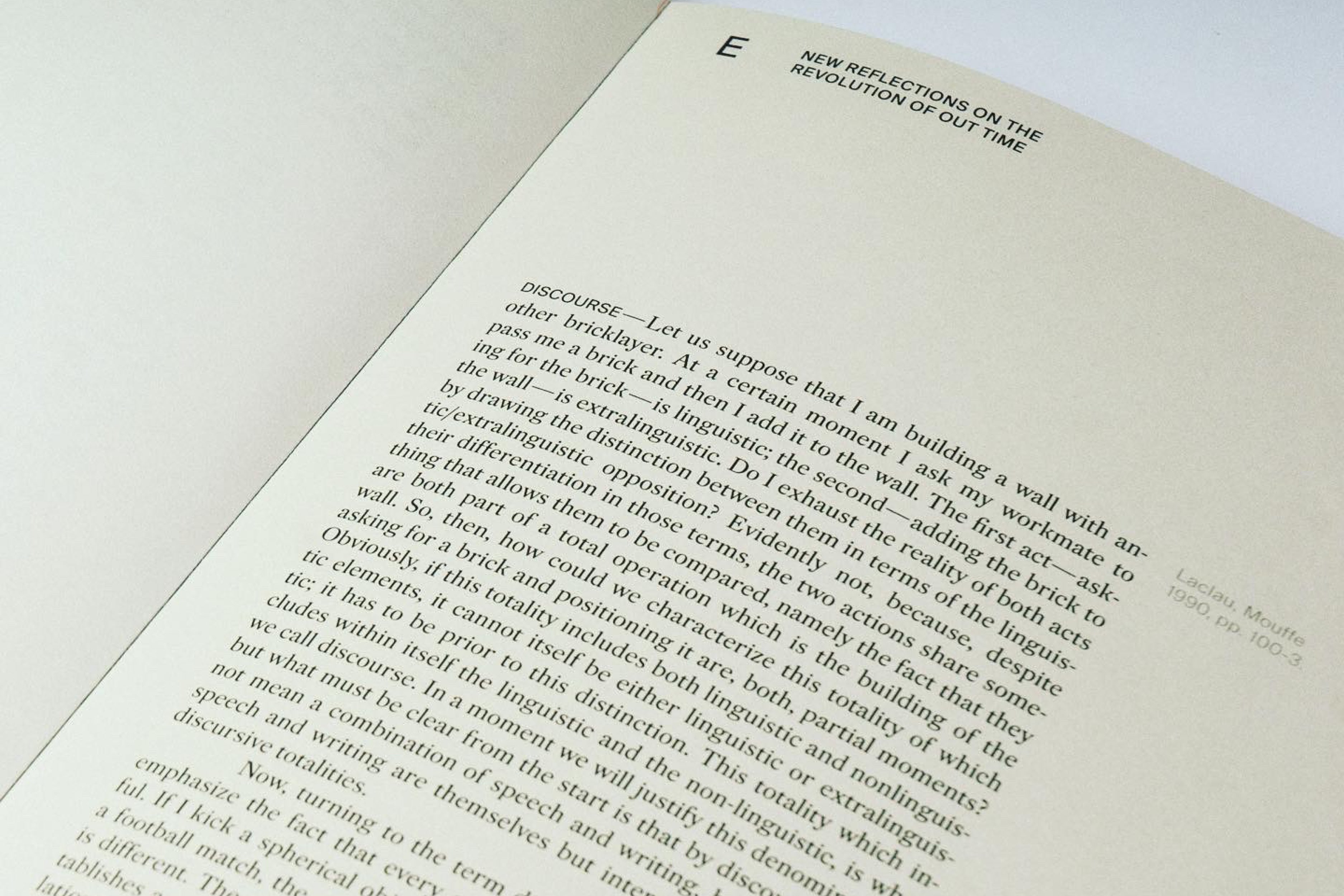
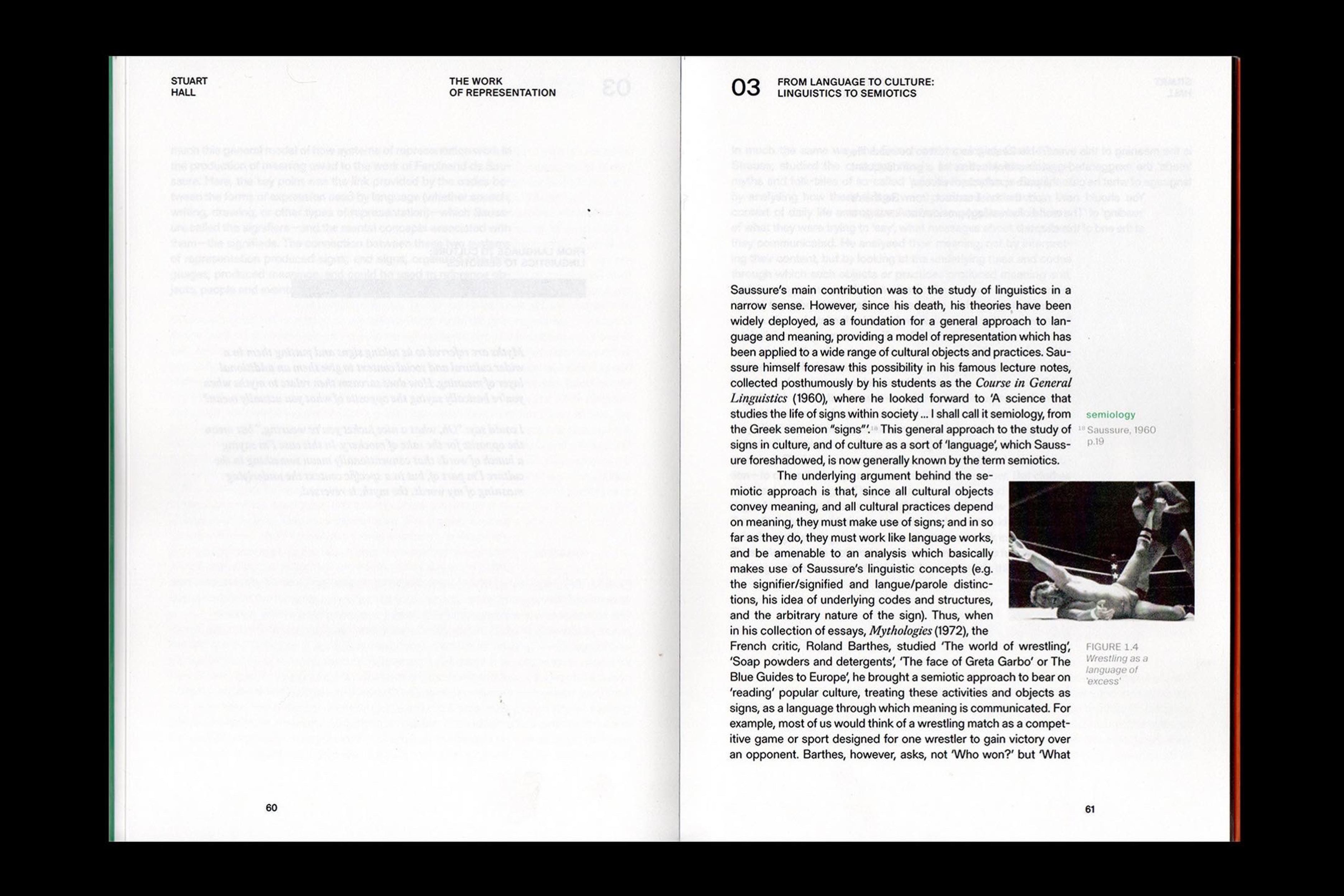
Work of Representation
[2021]
Re-design of Stuart Hall's Work of Representation
Collaboration with Basia Strzeżek

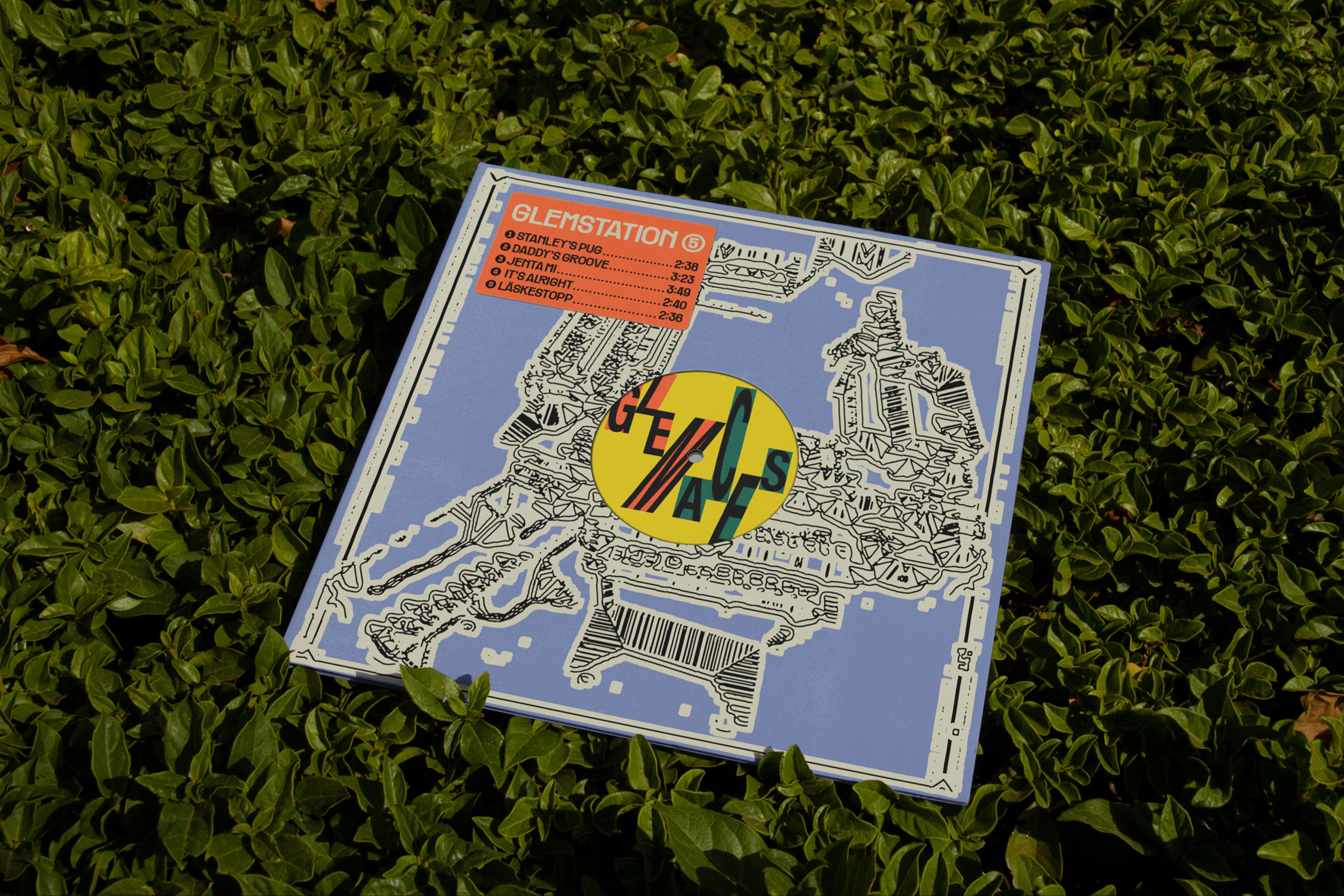
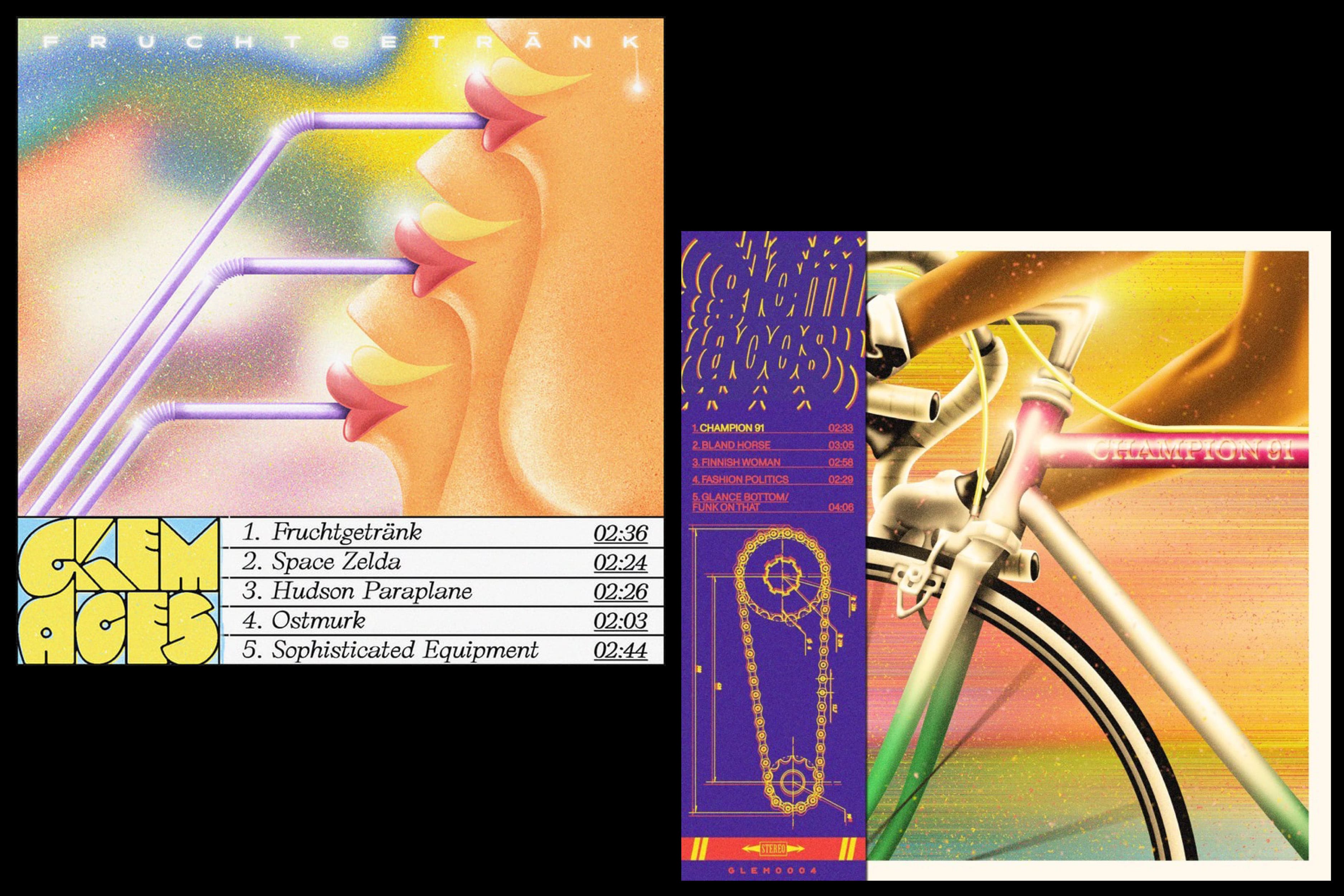
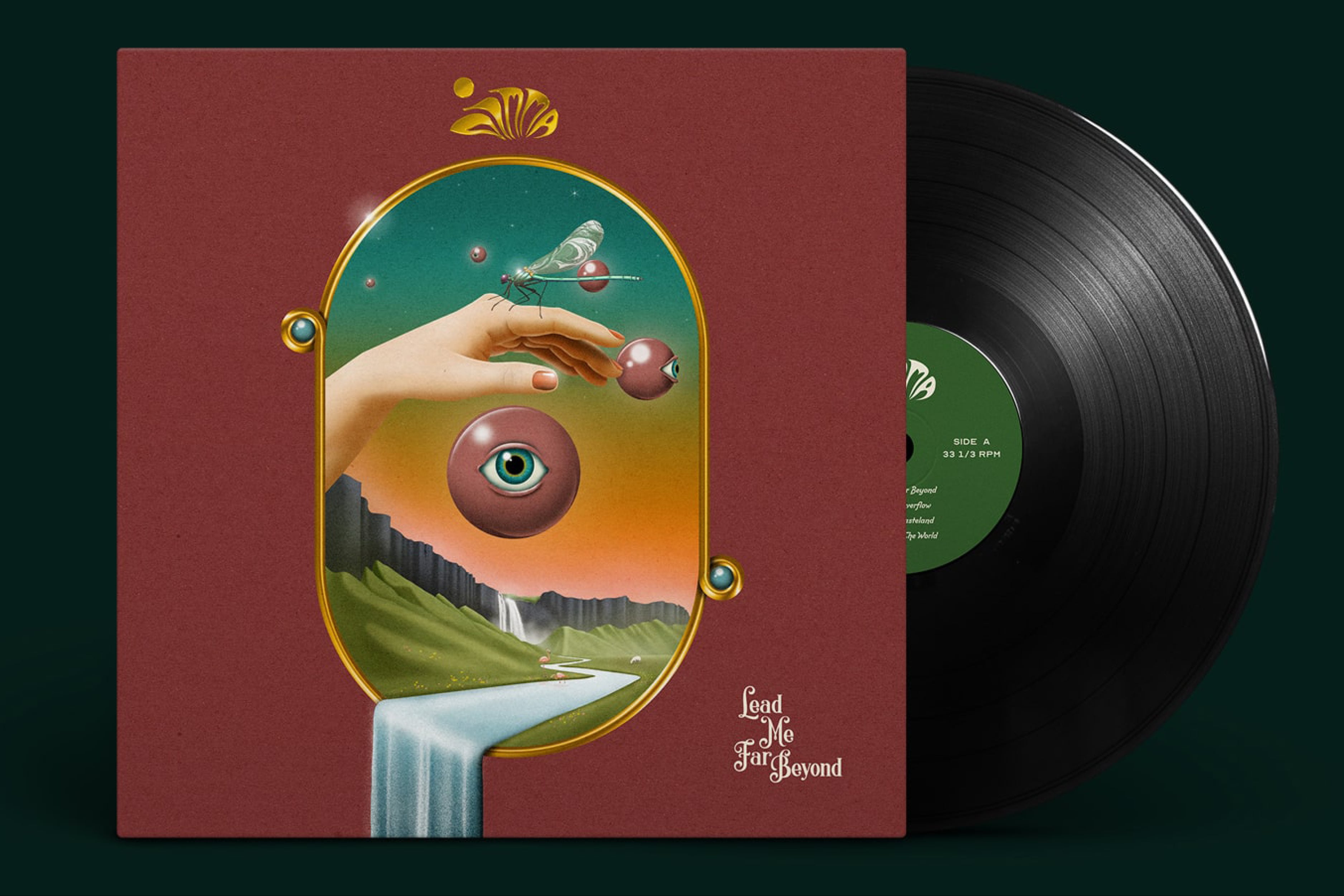
Various Album Covers
[2020–2024]